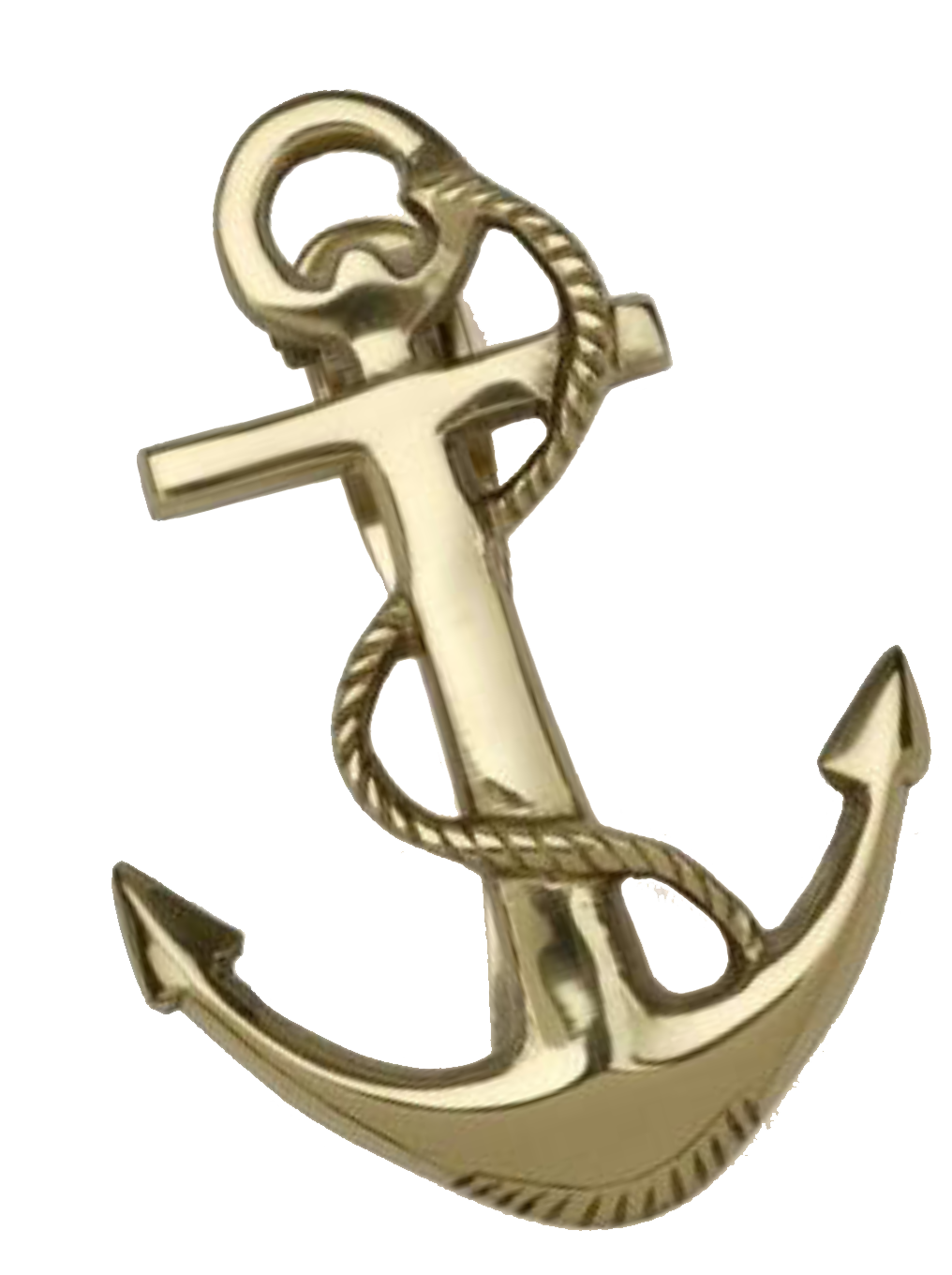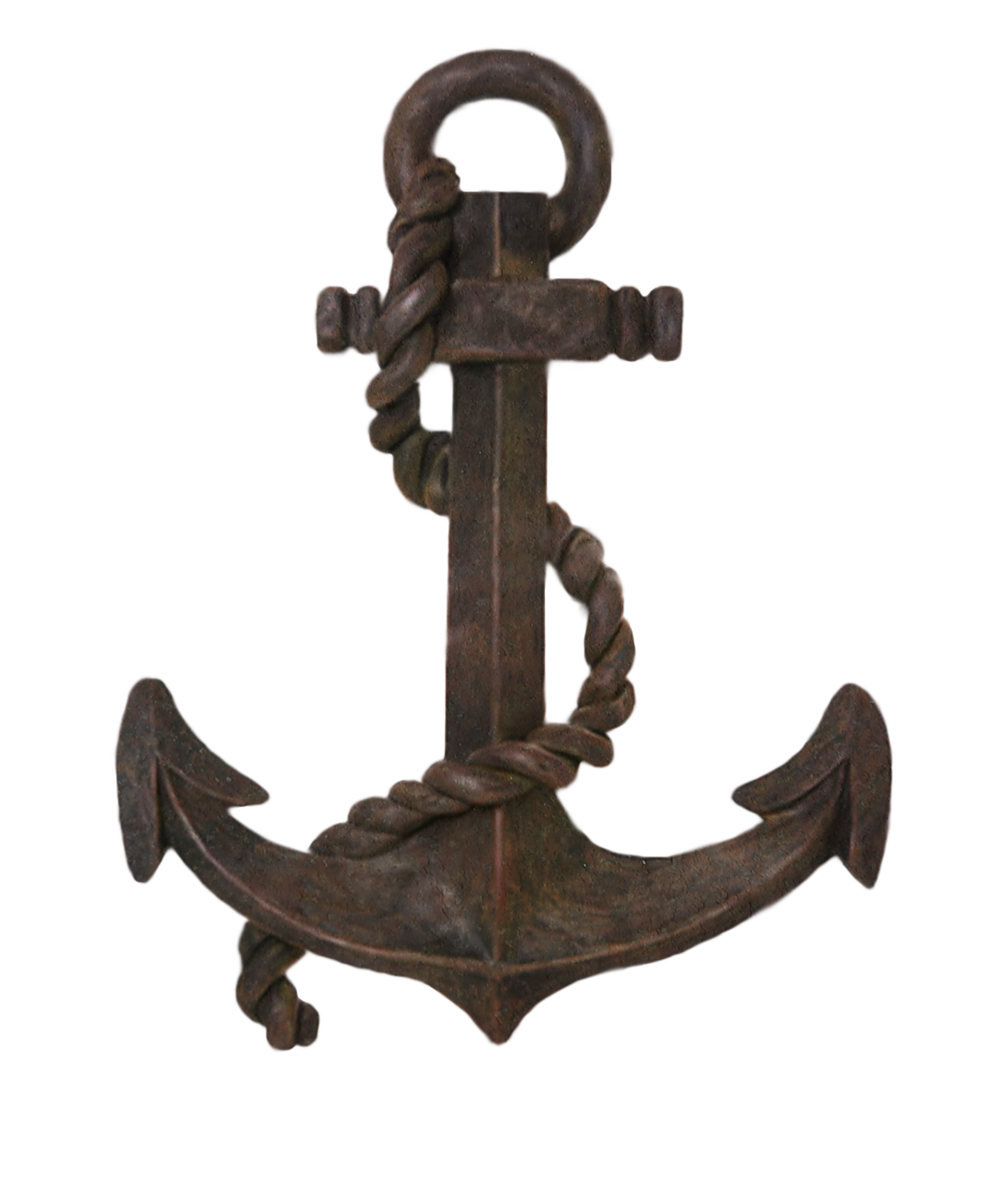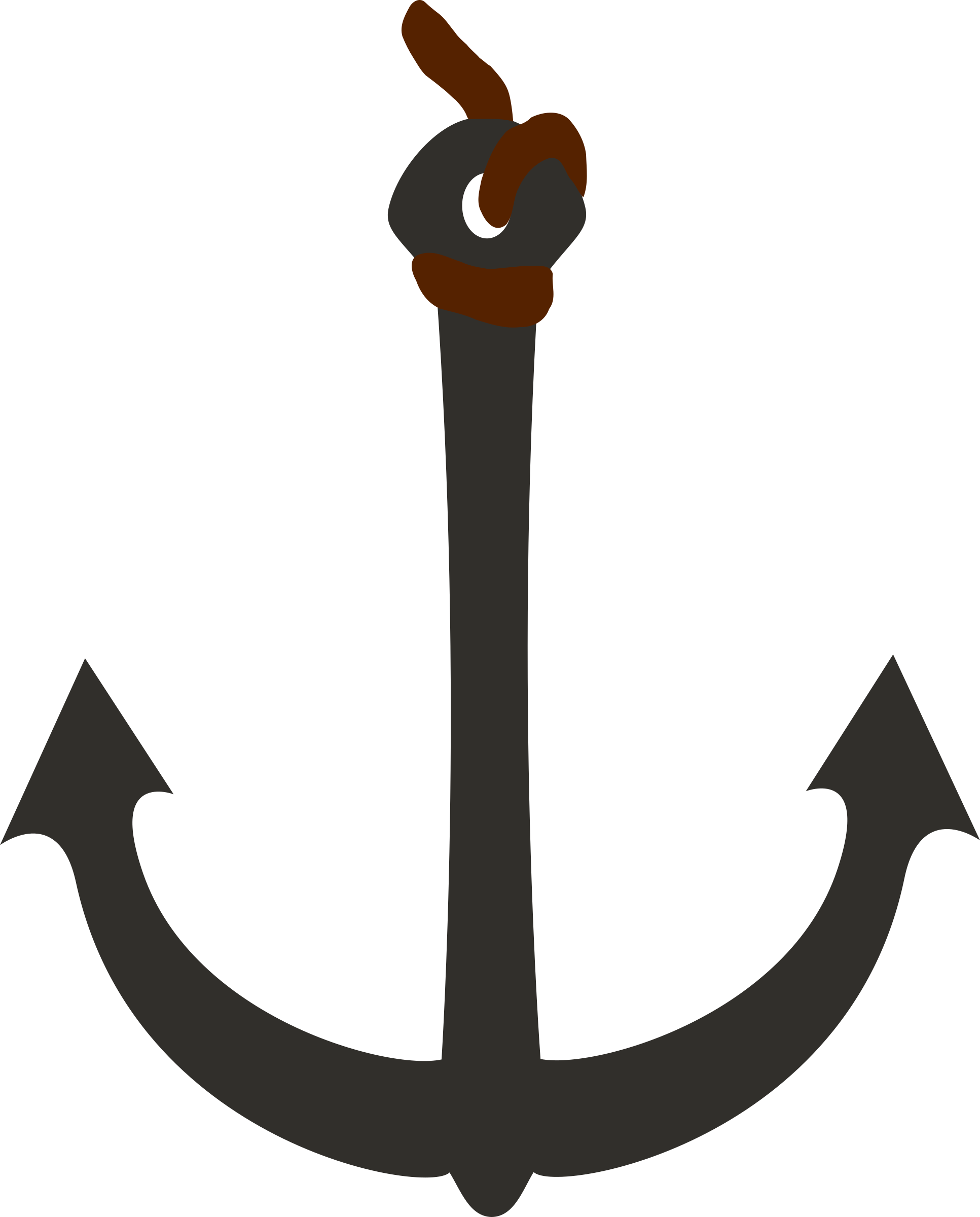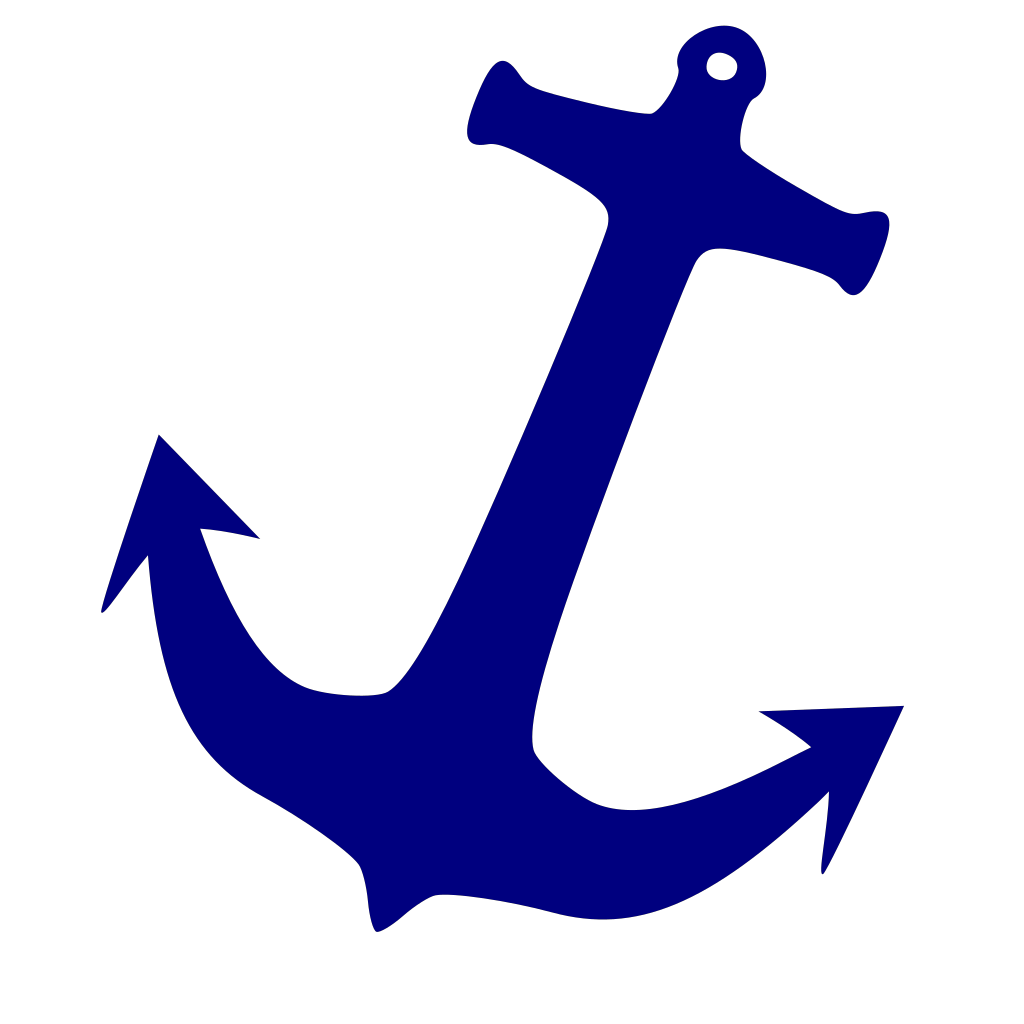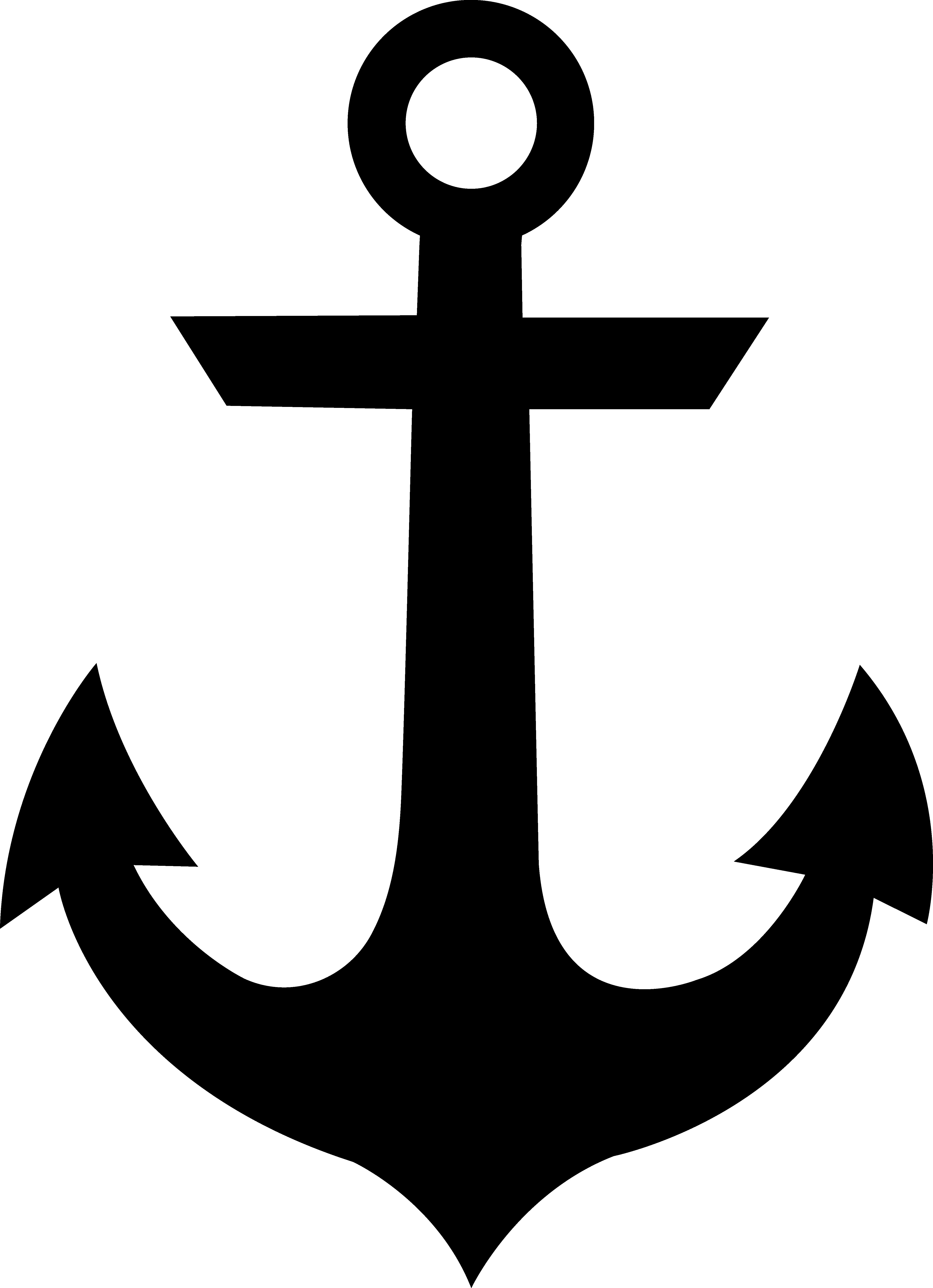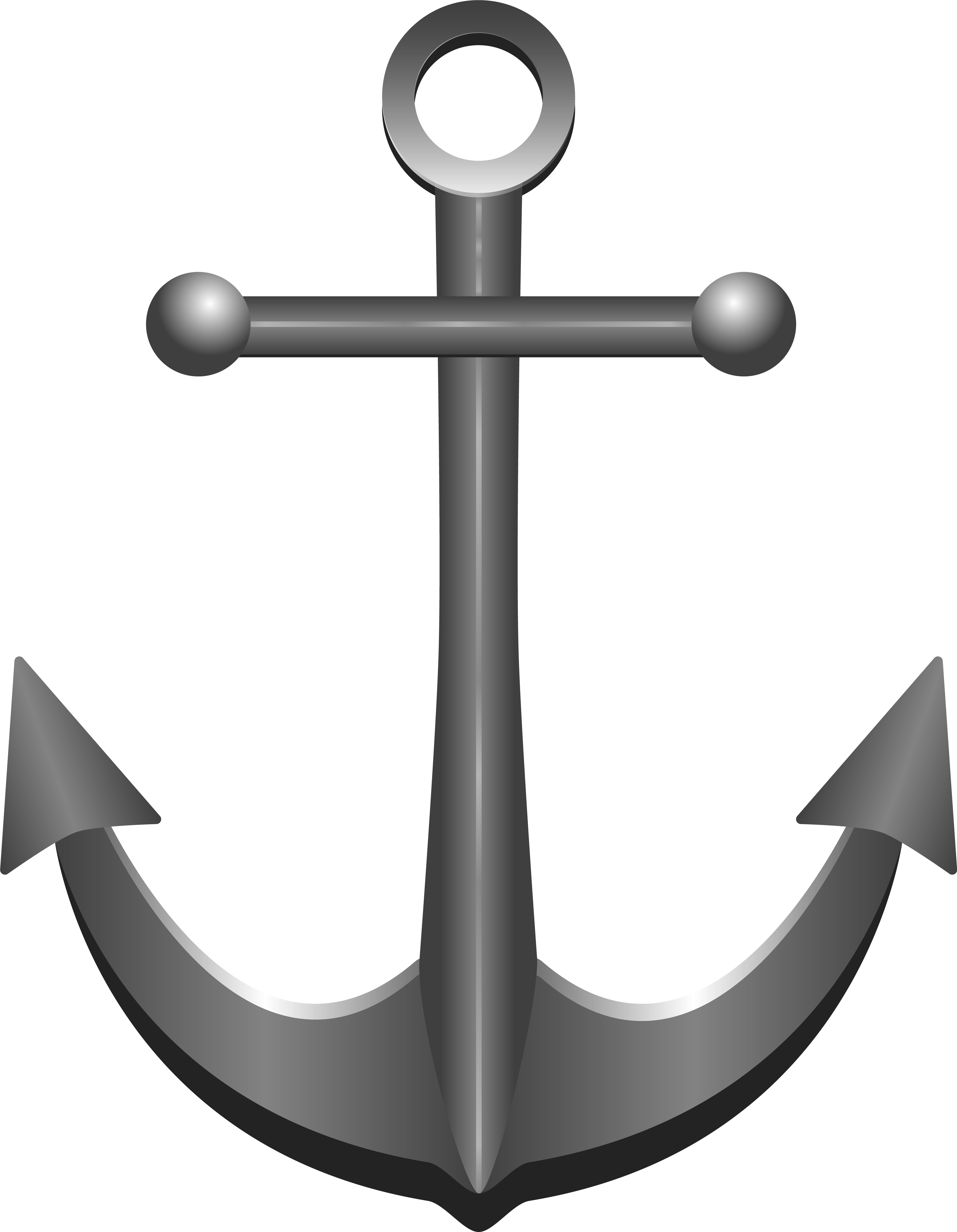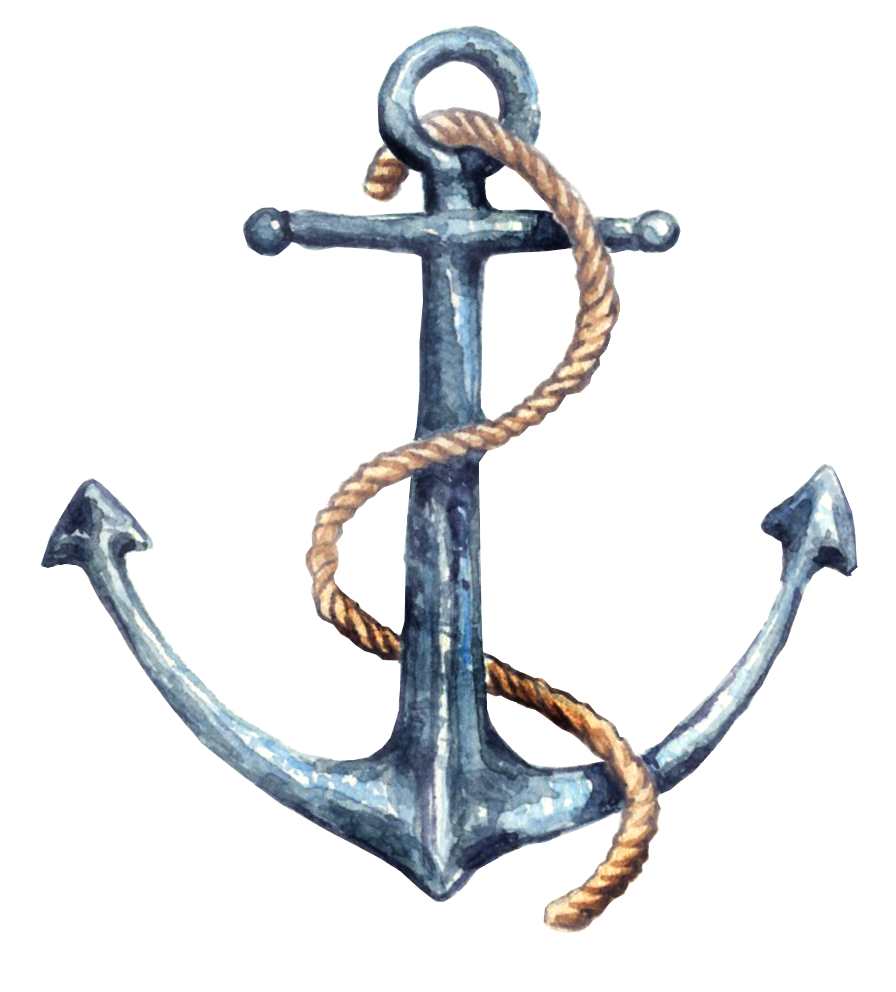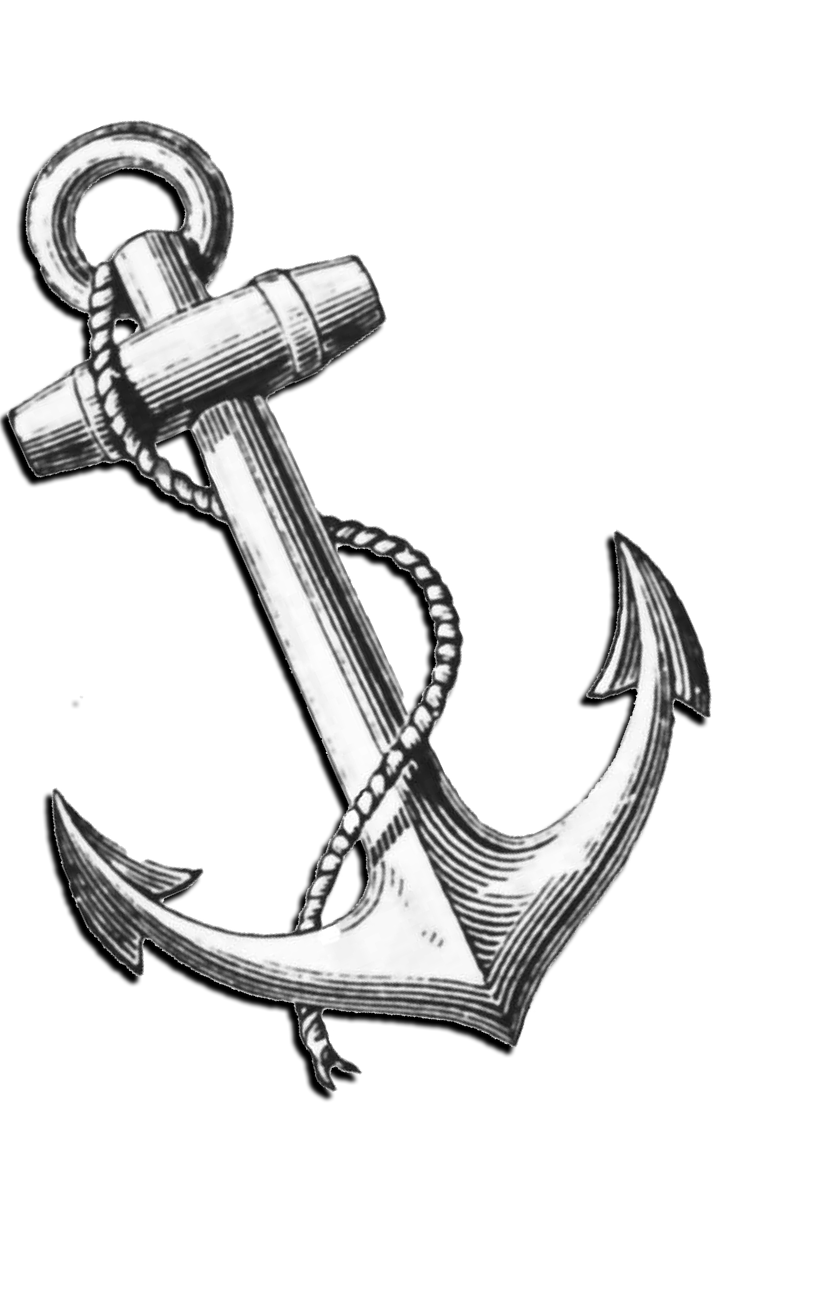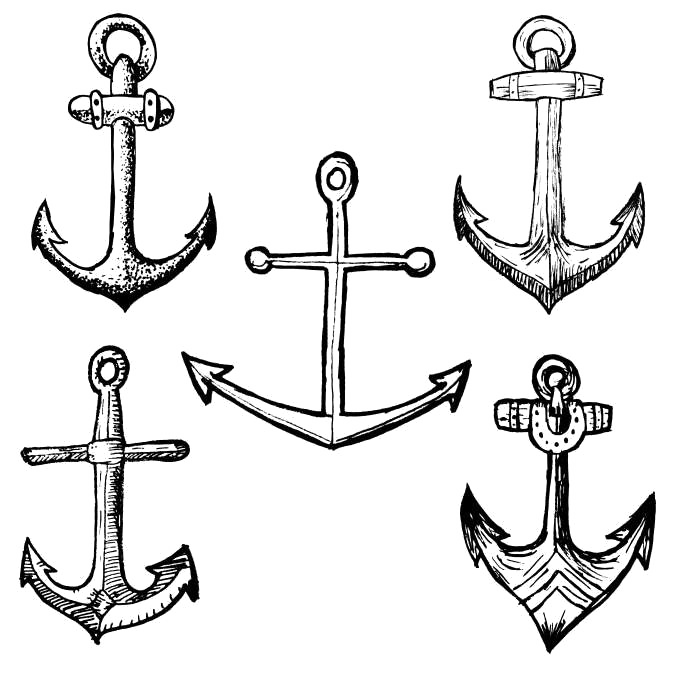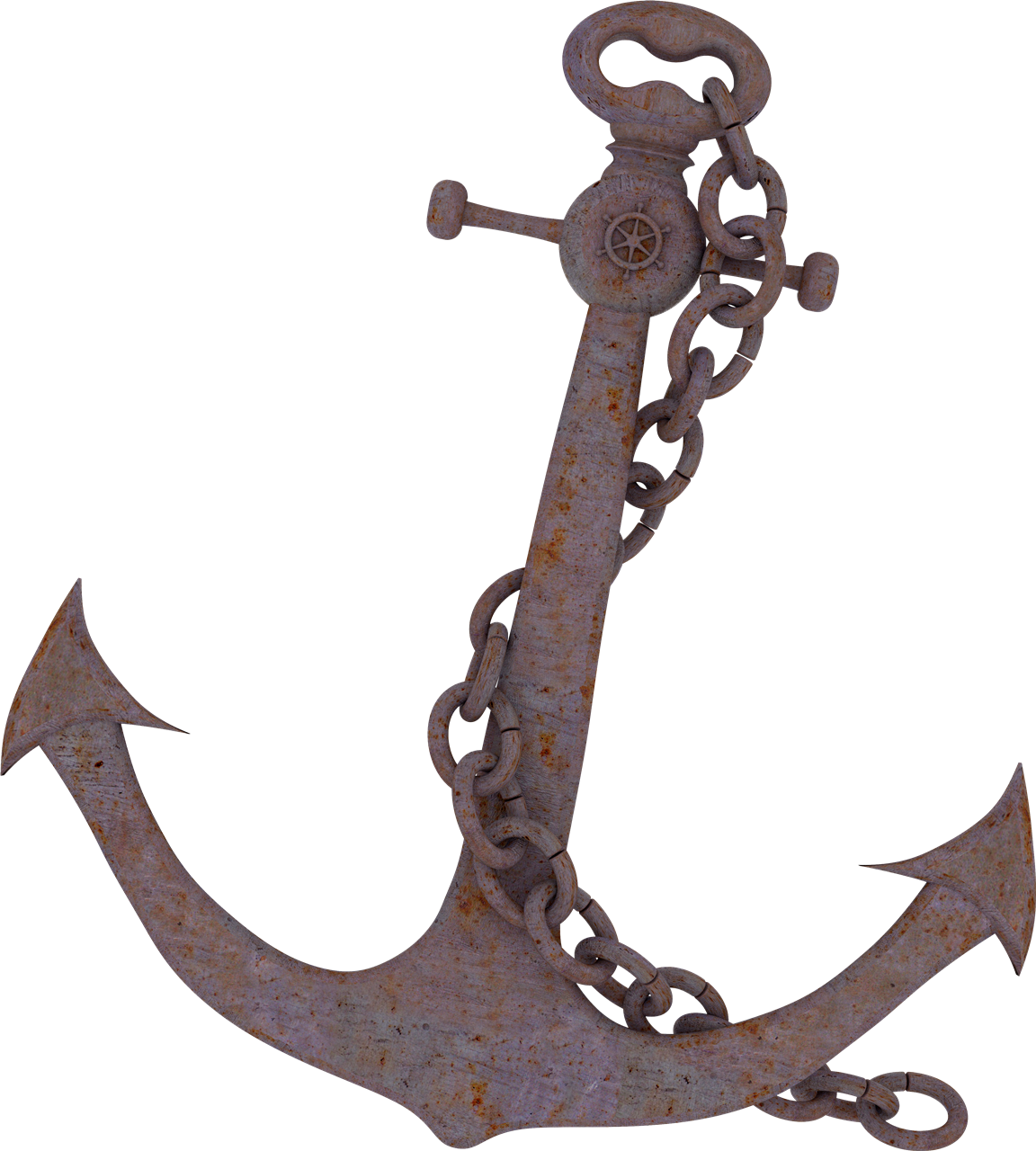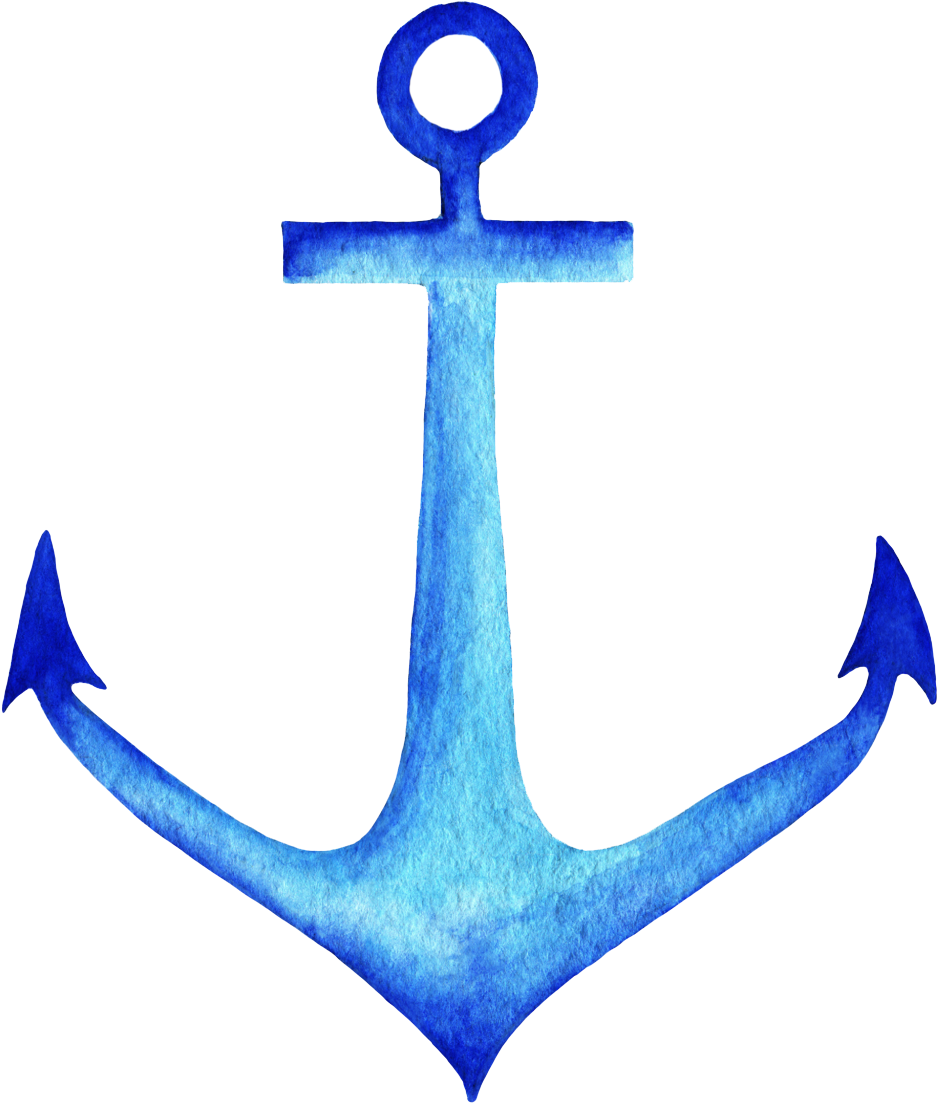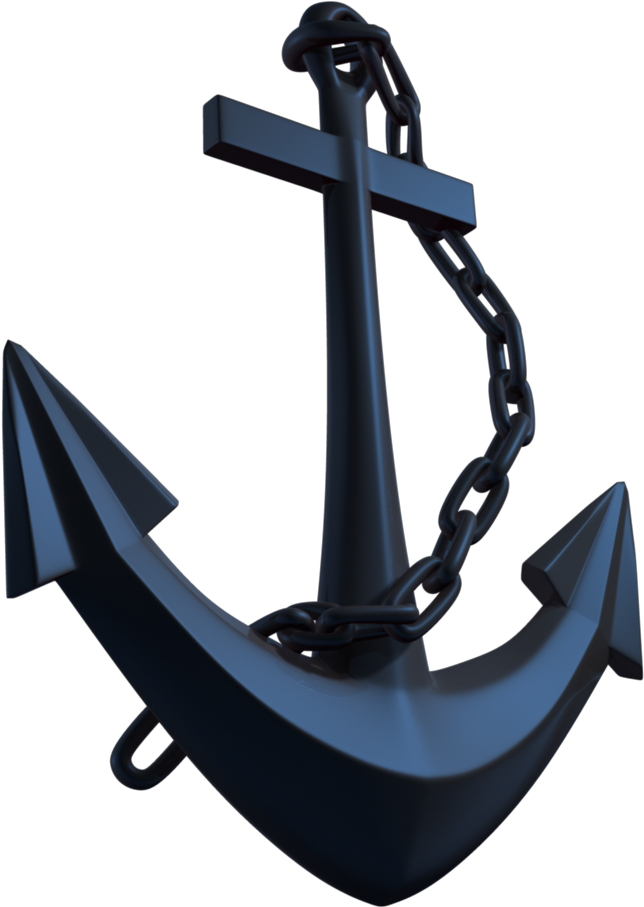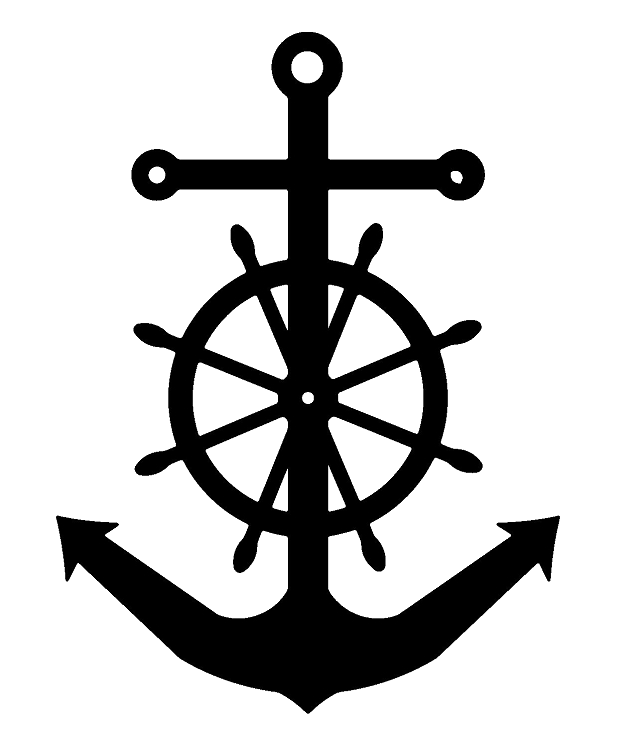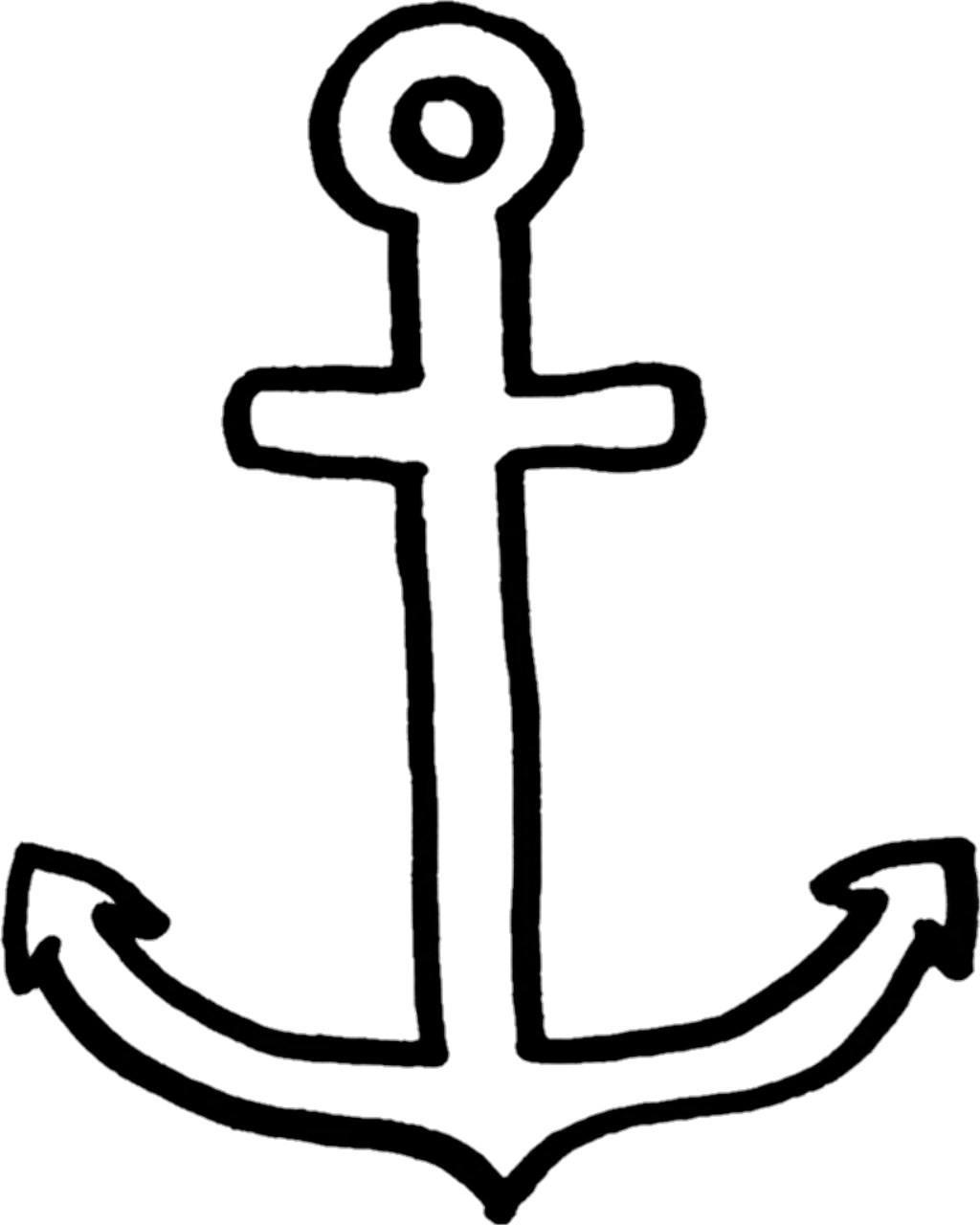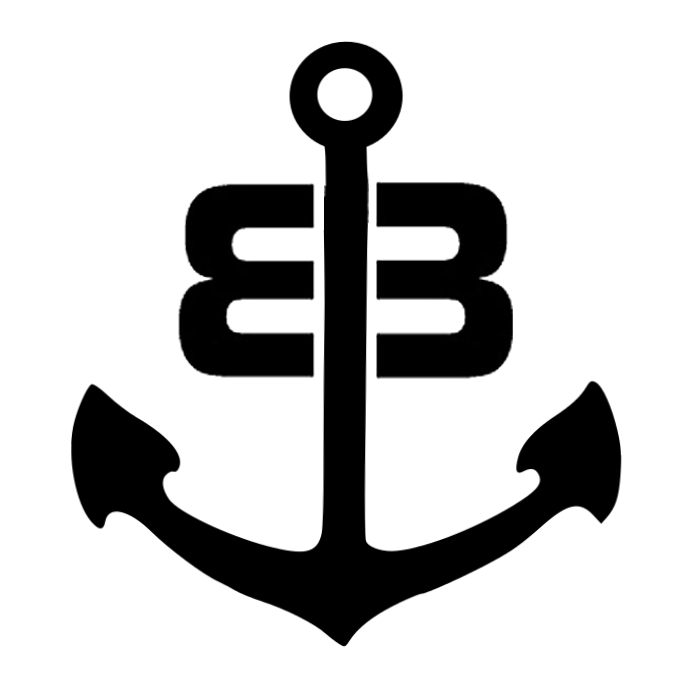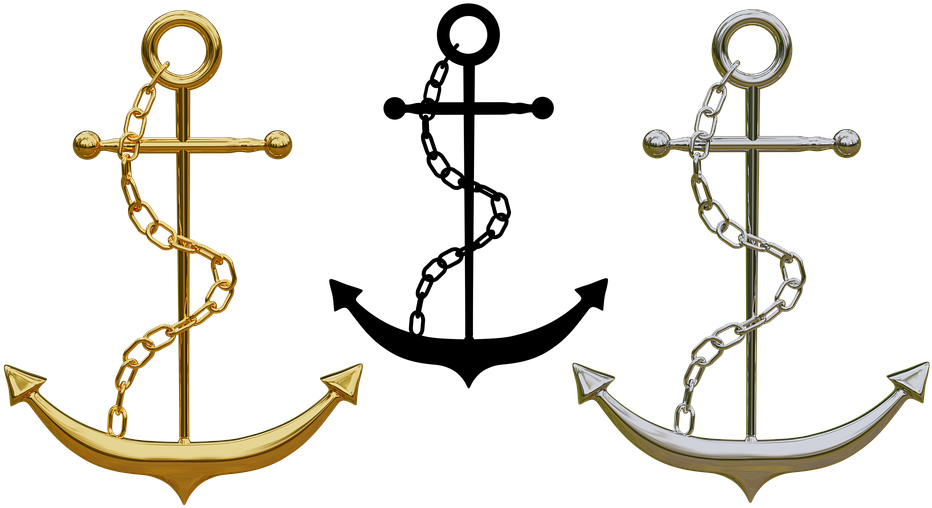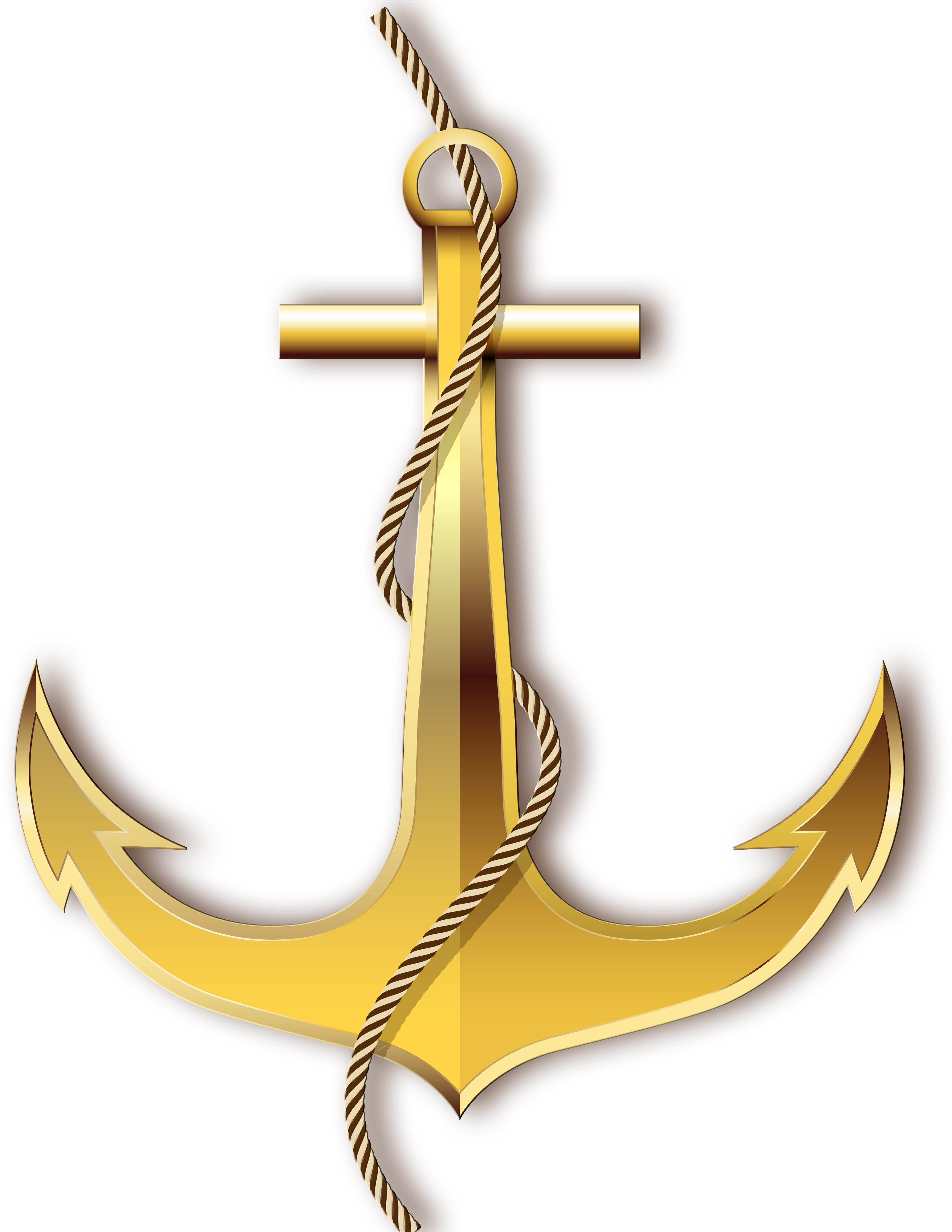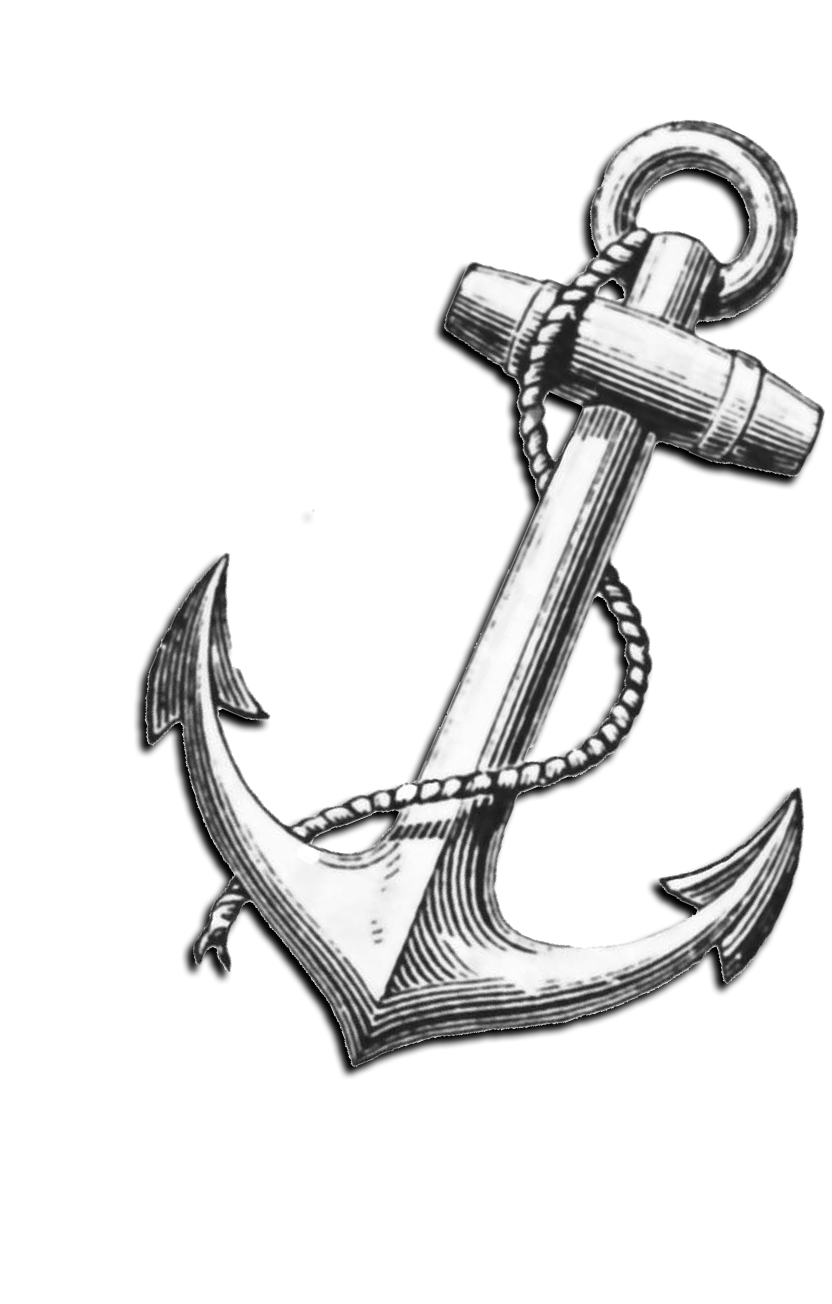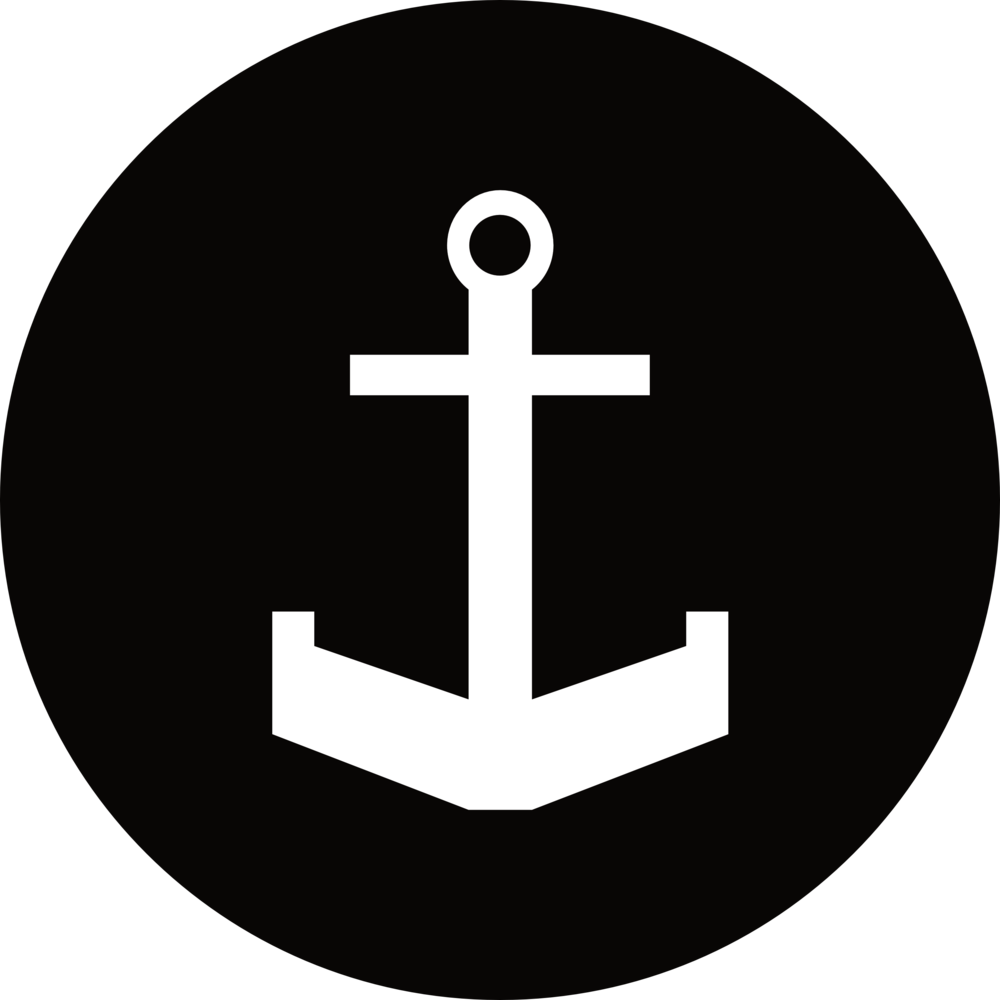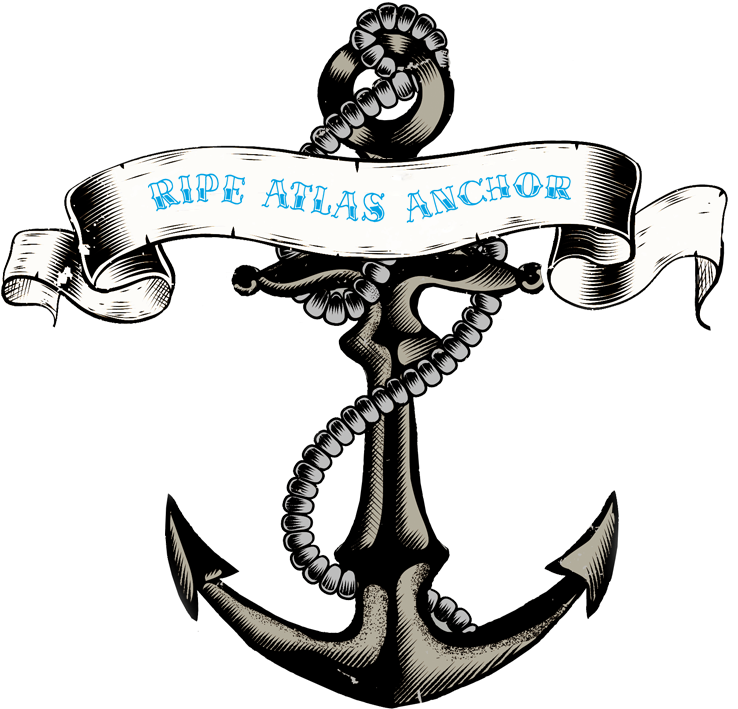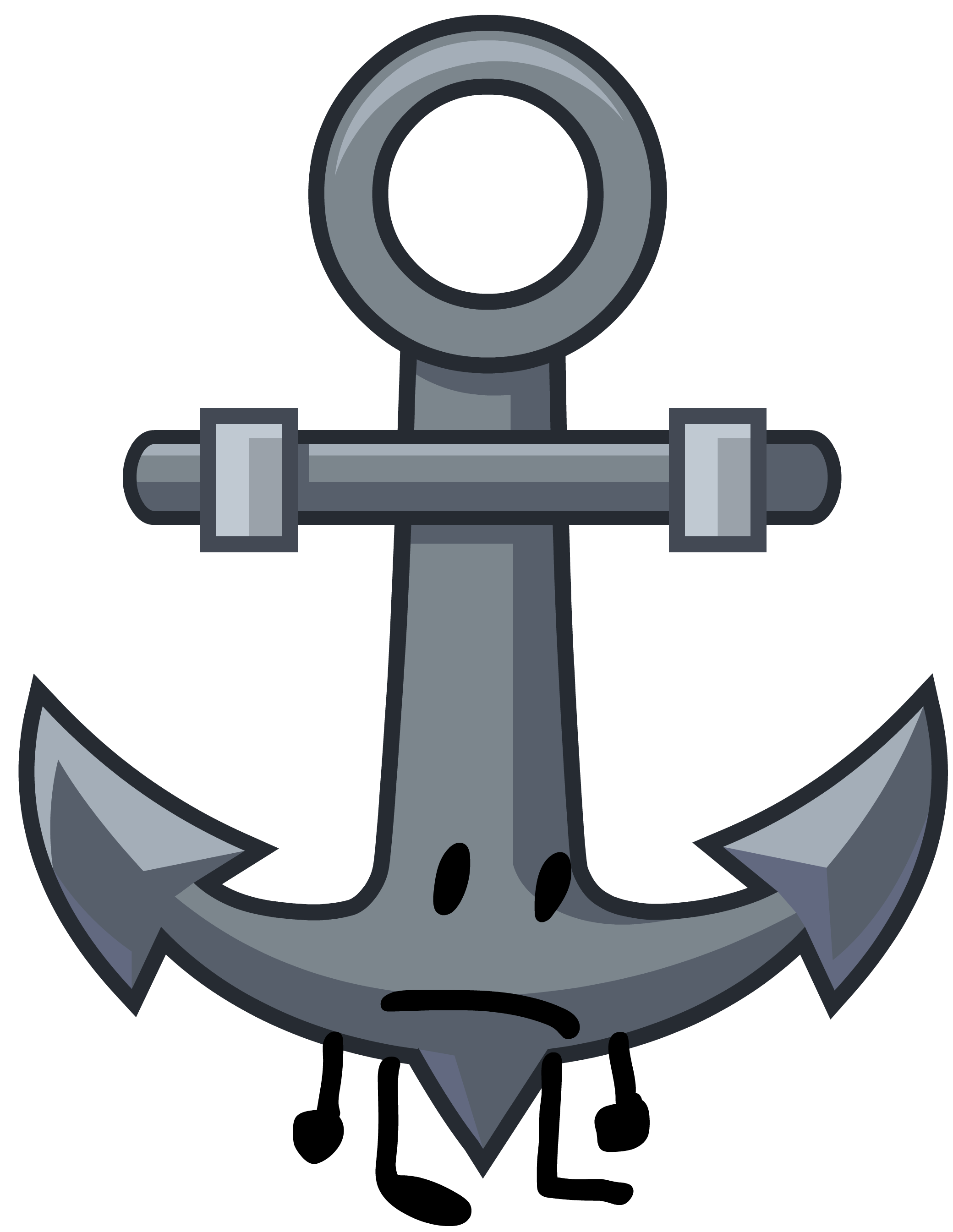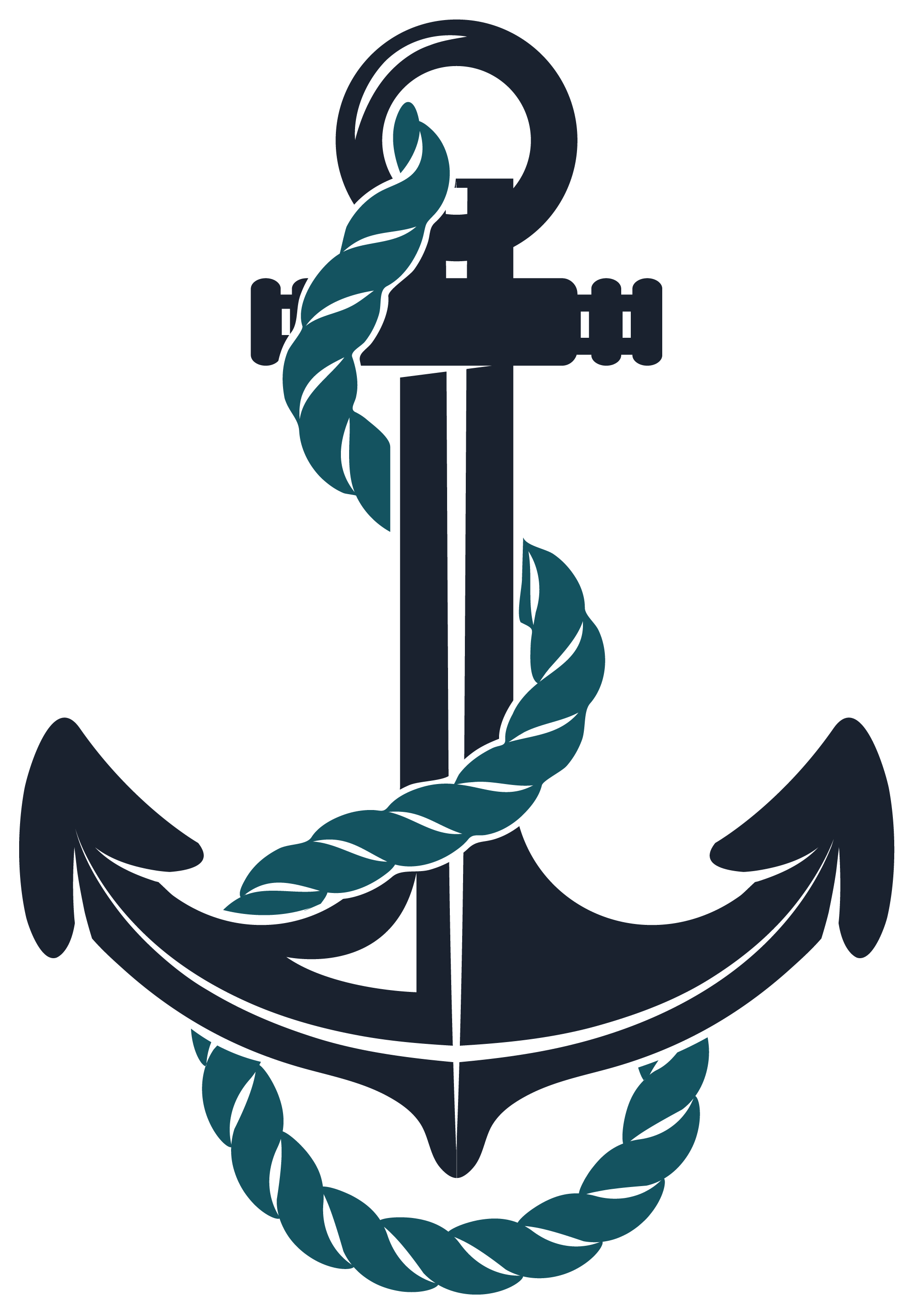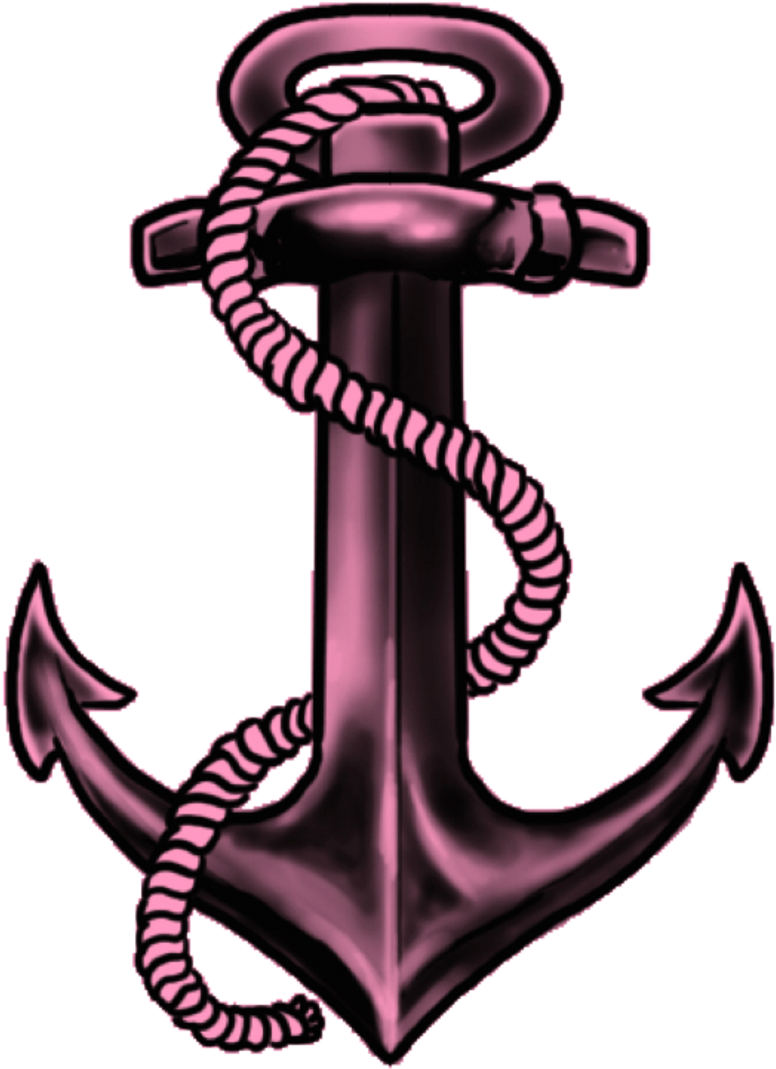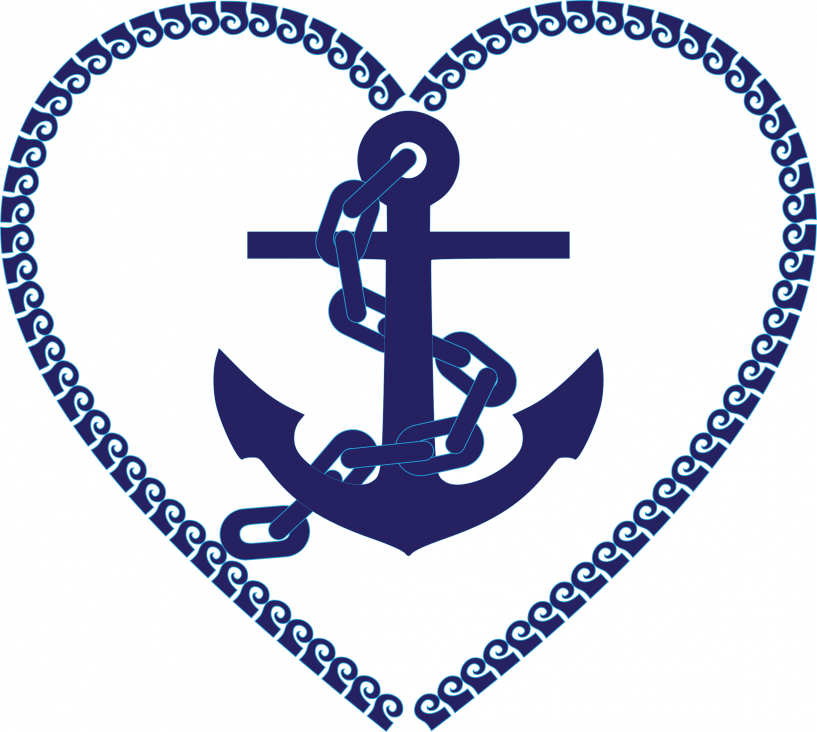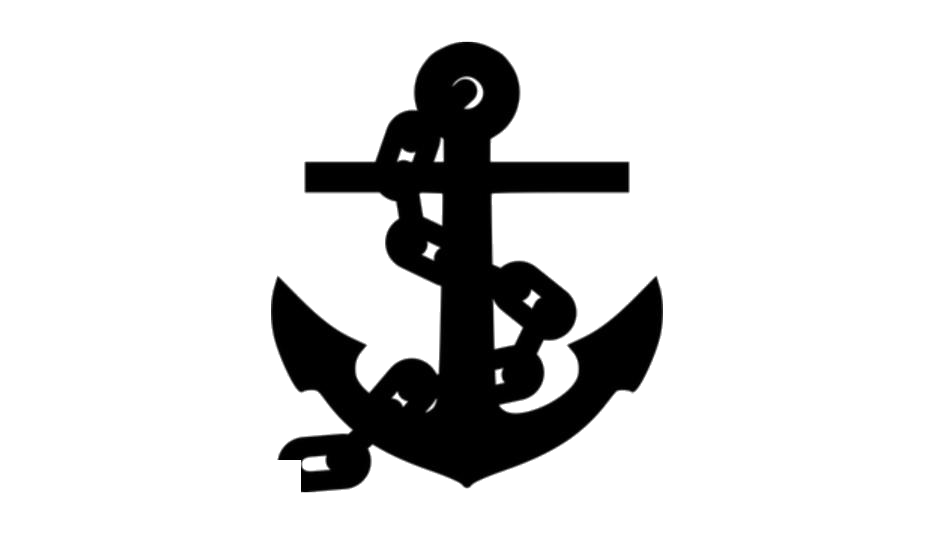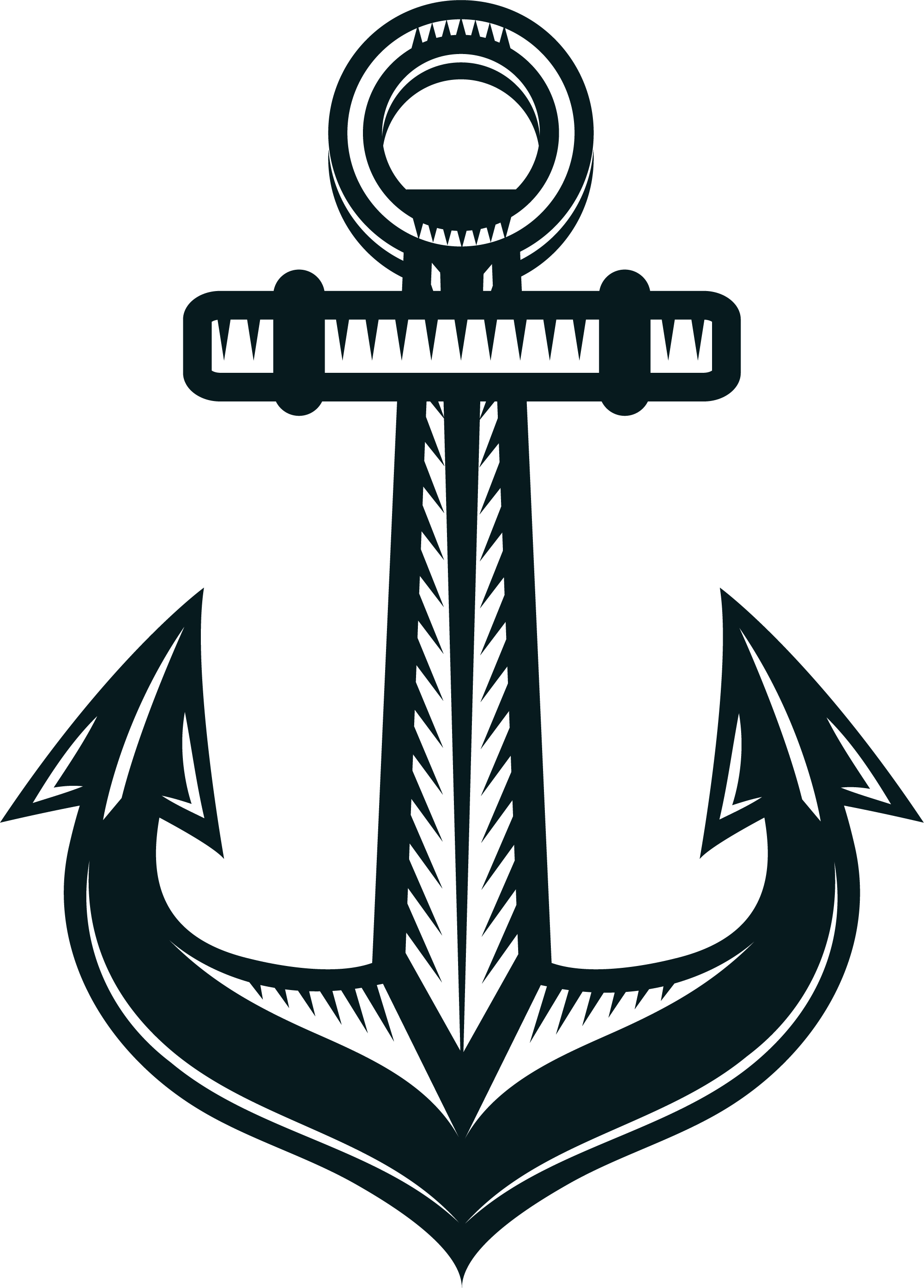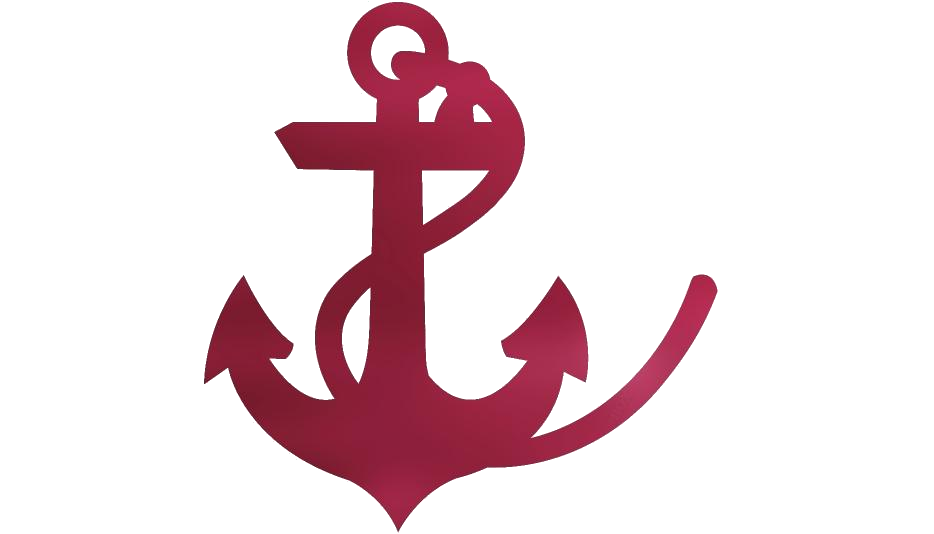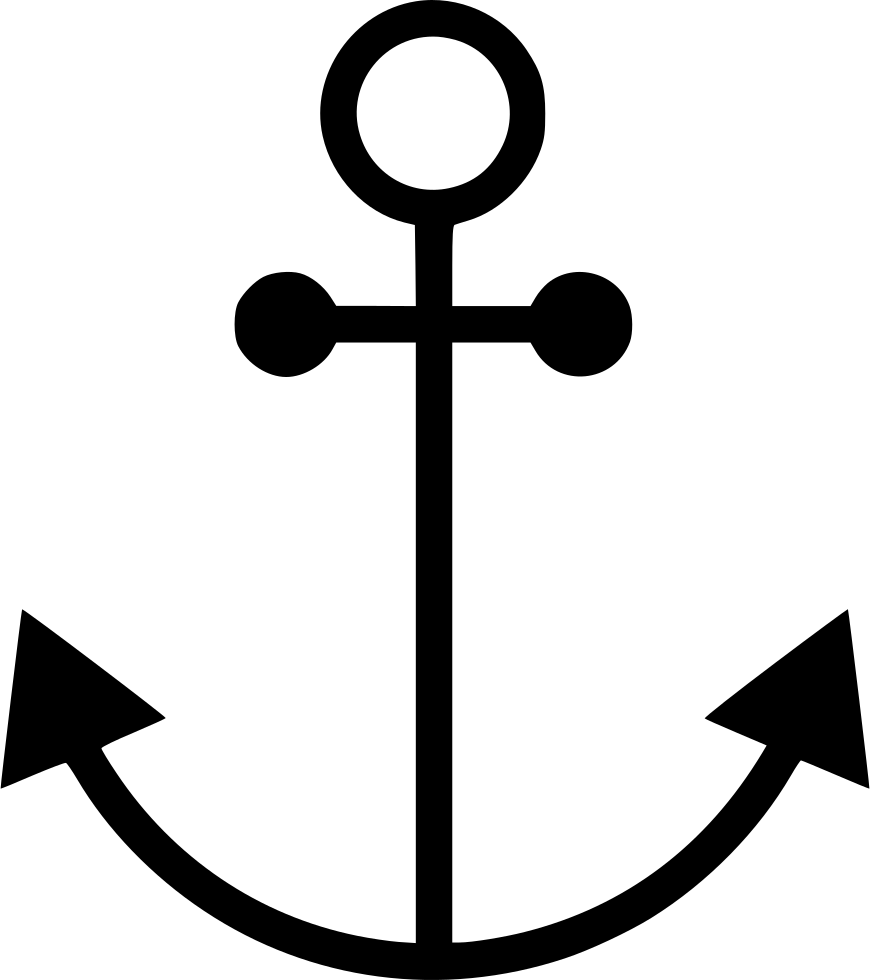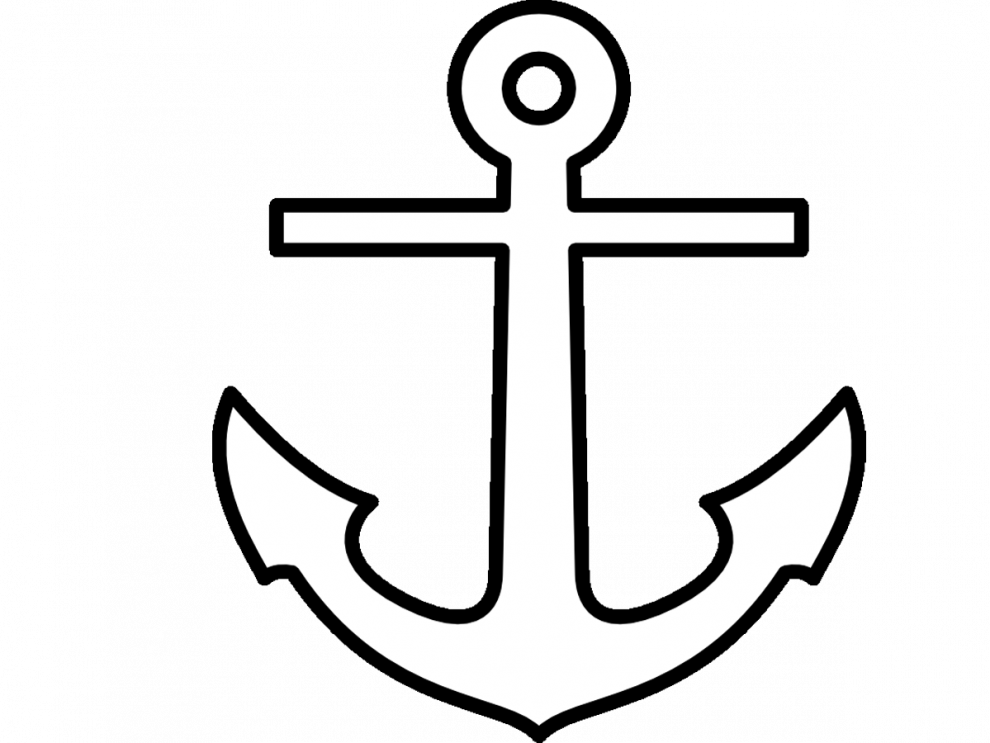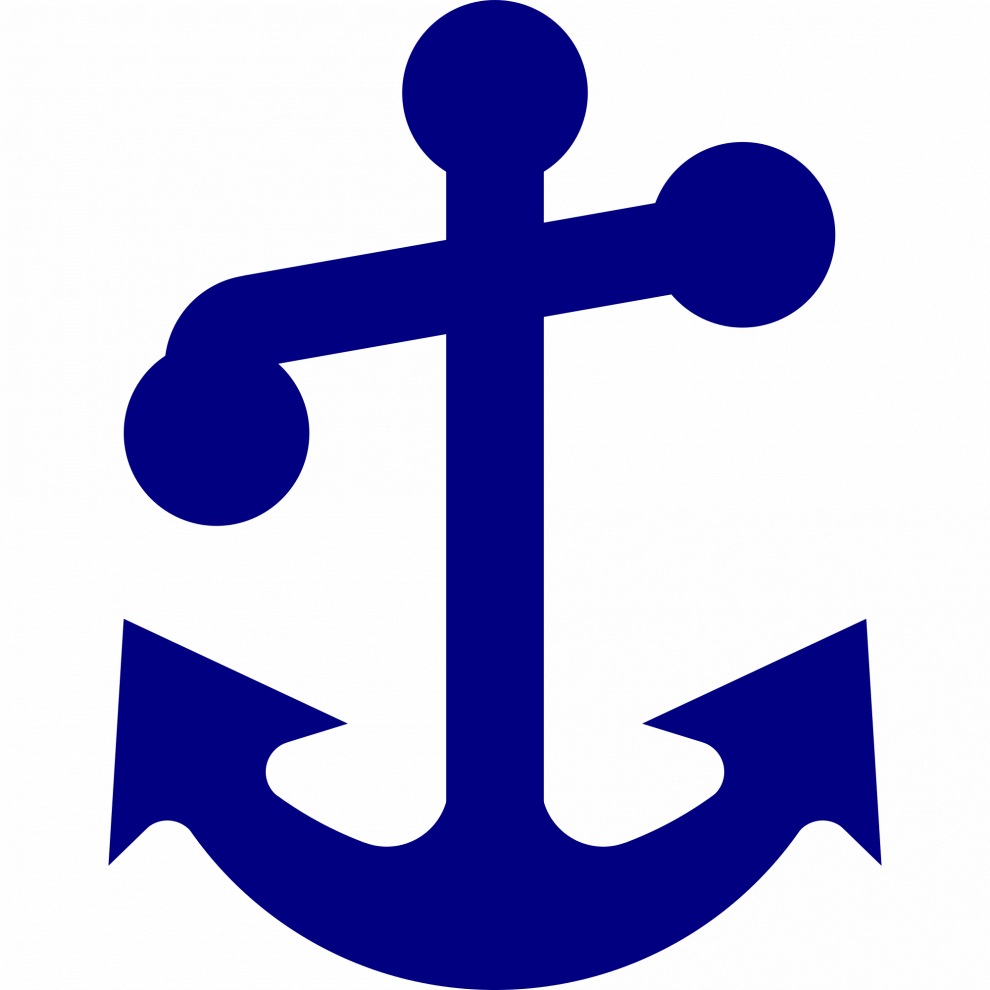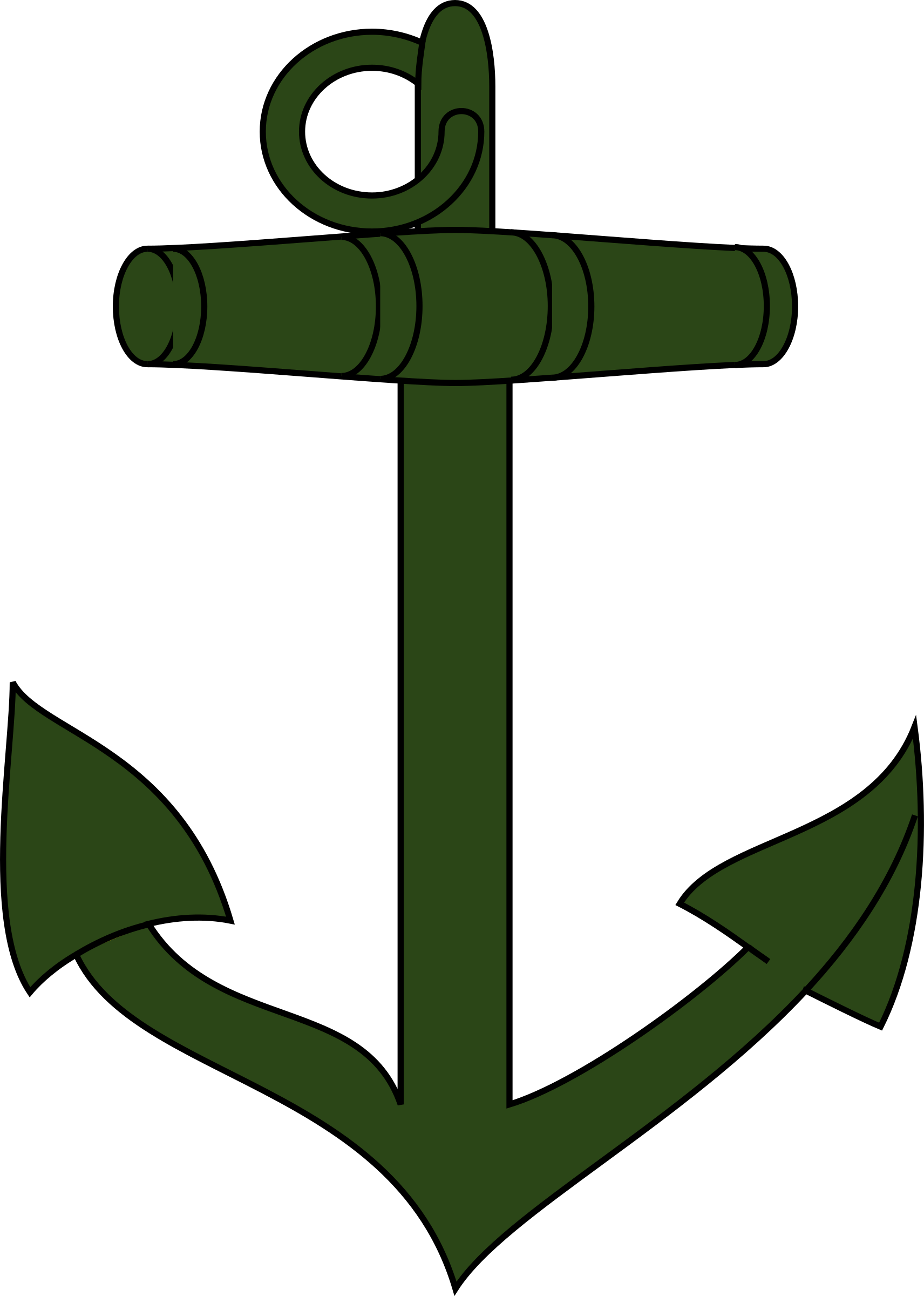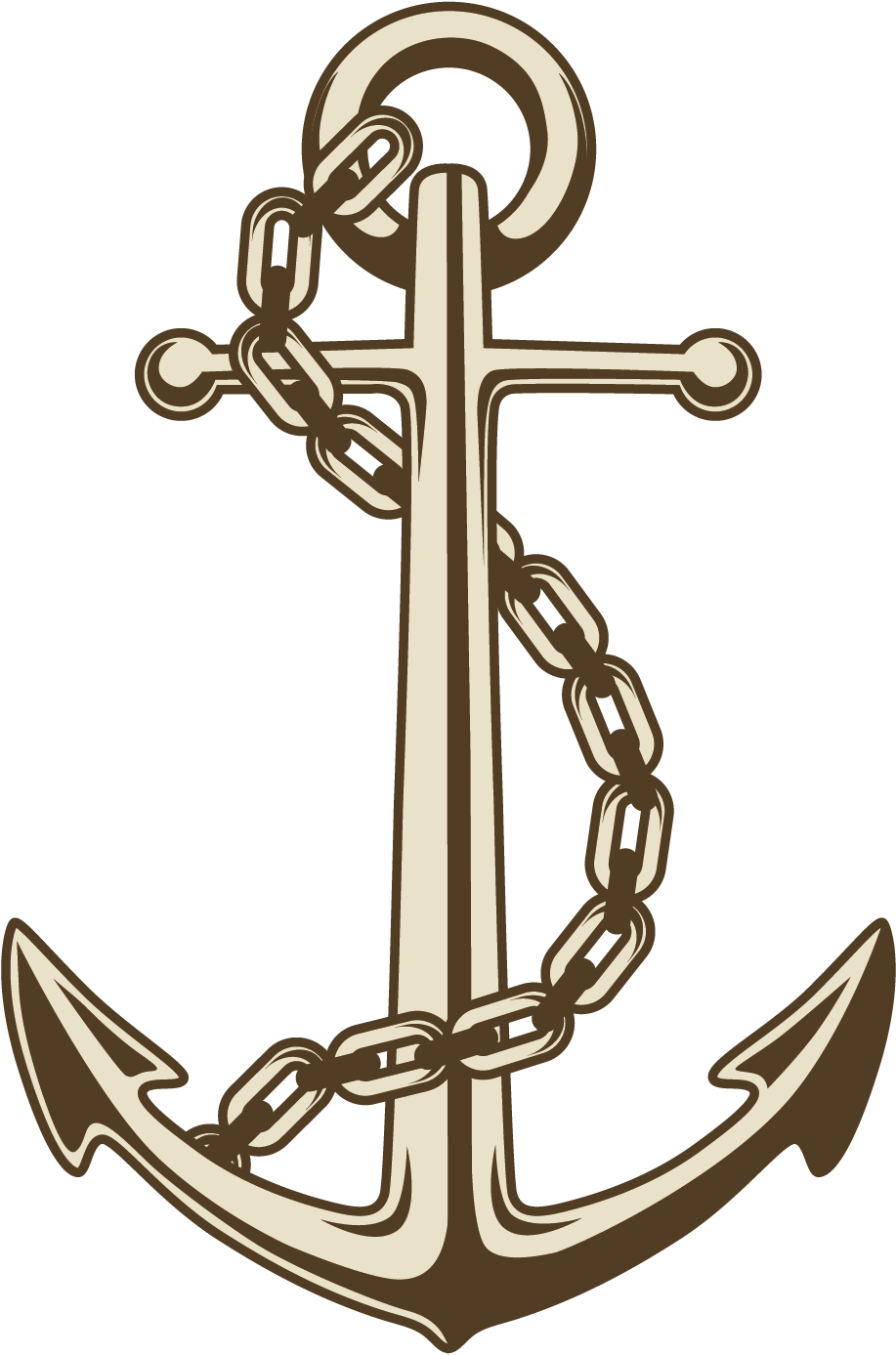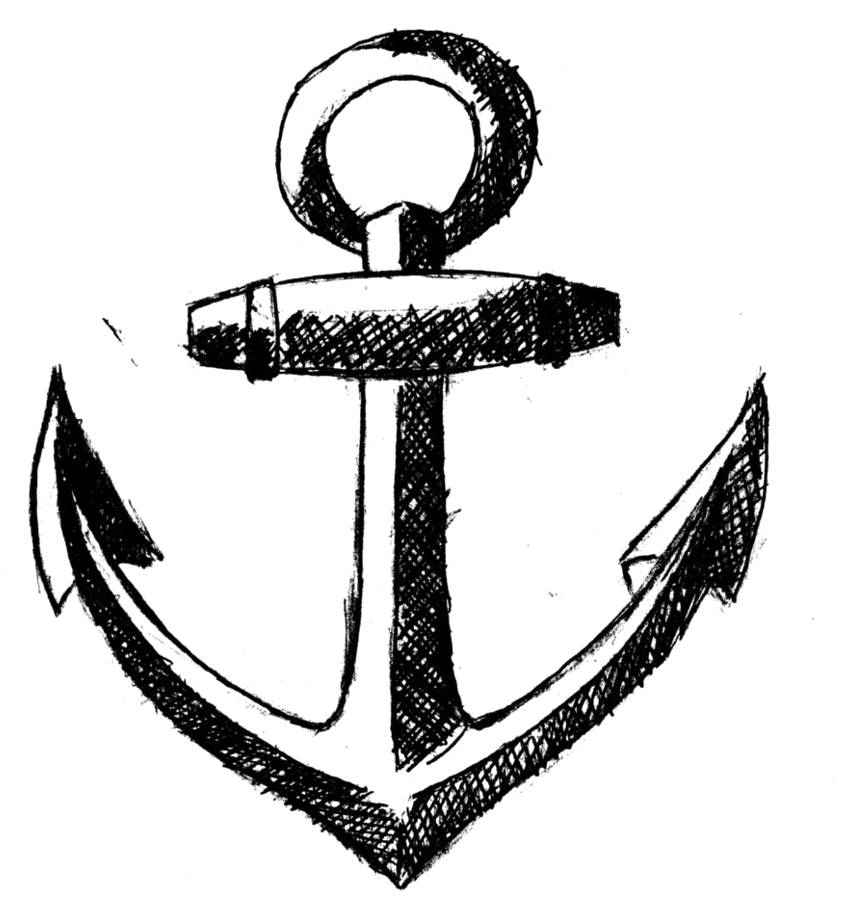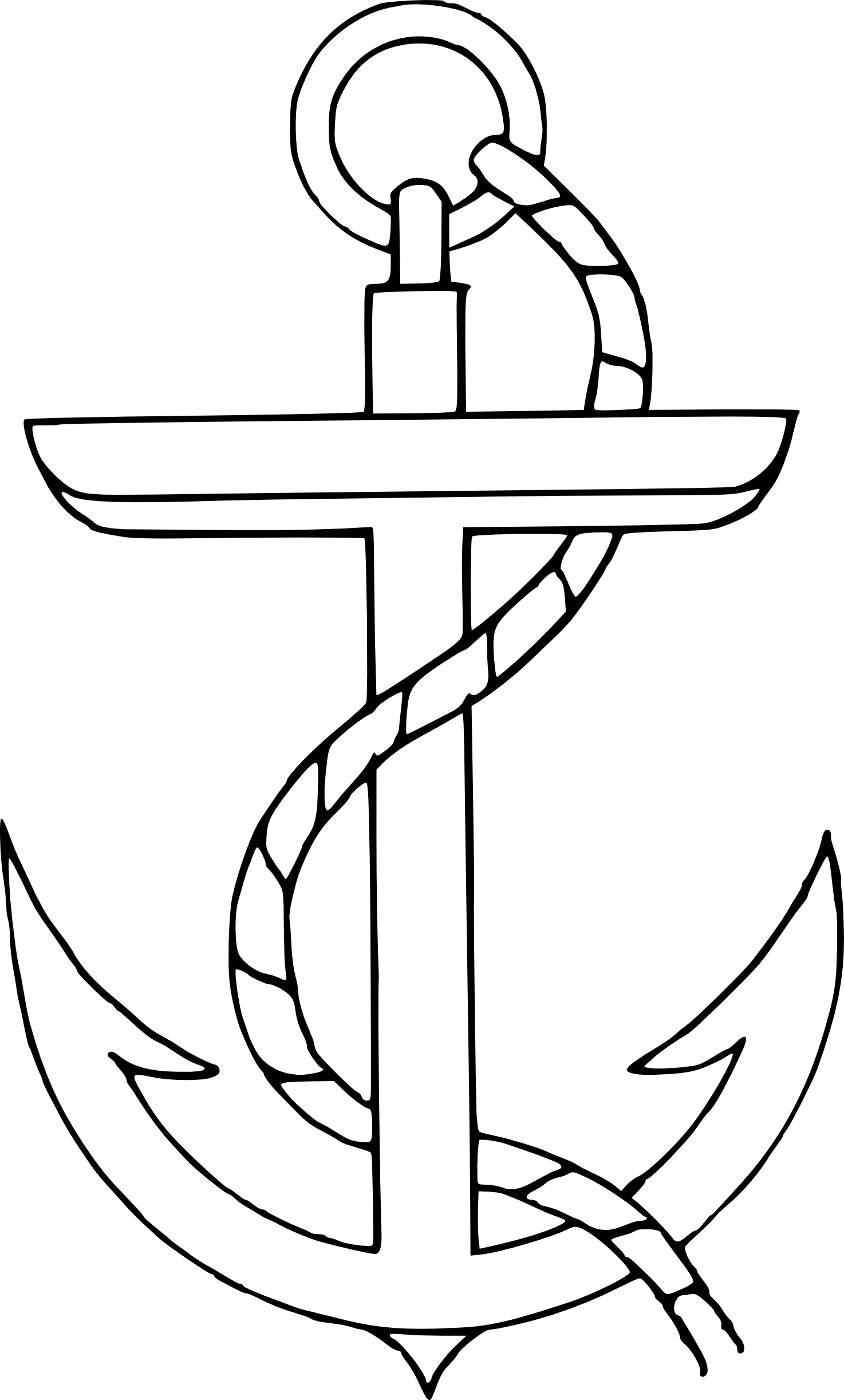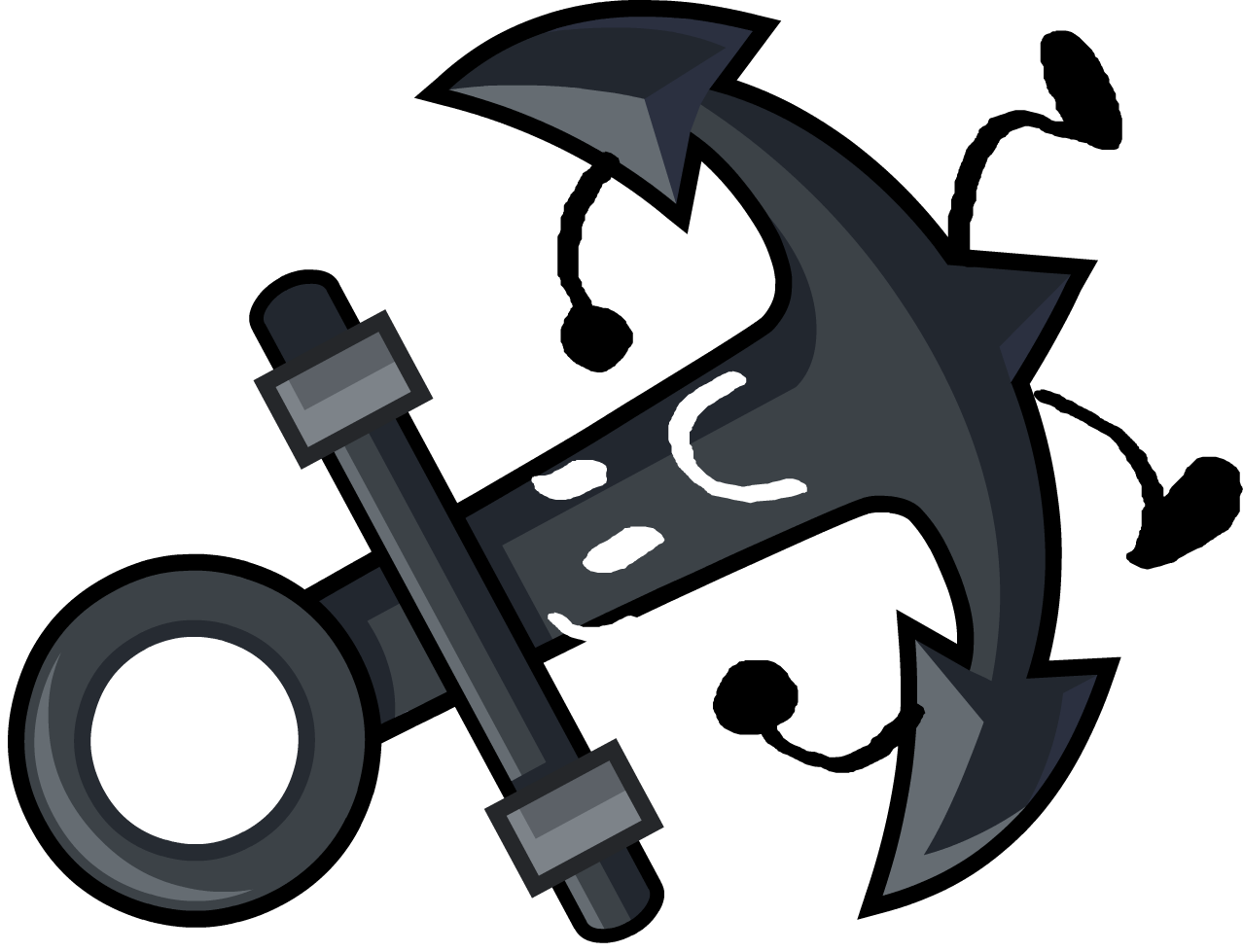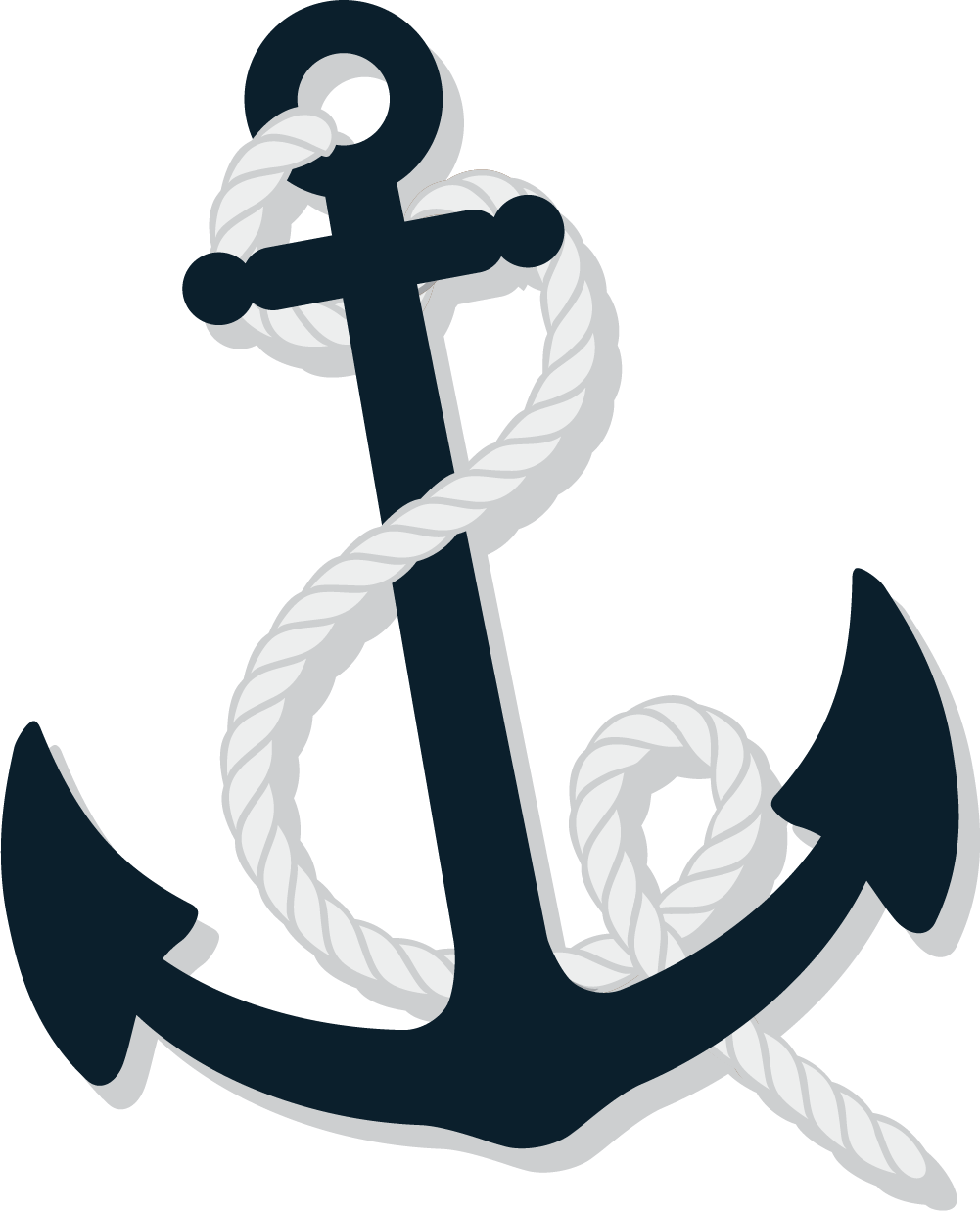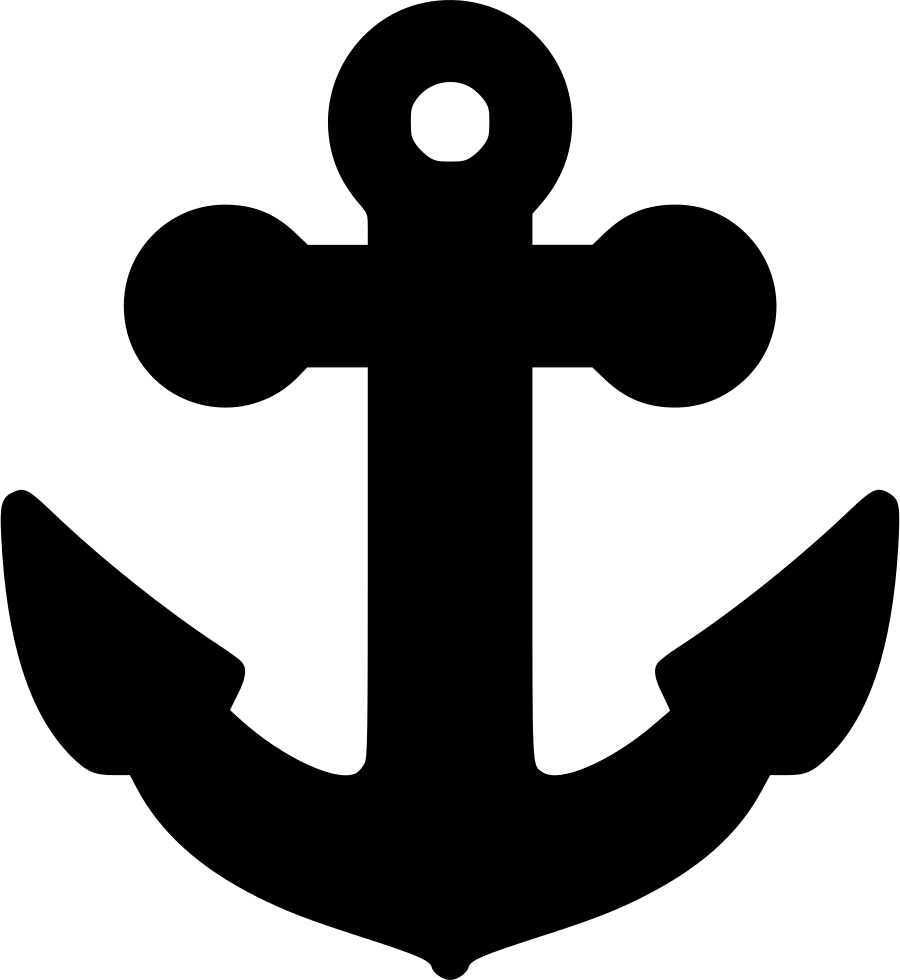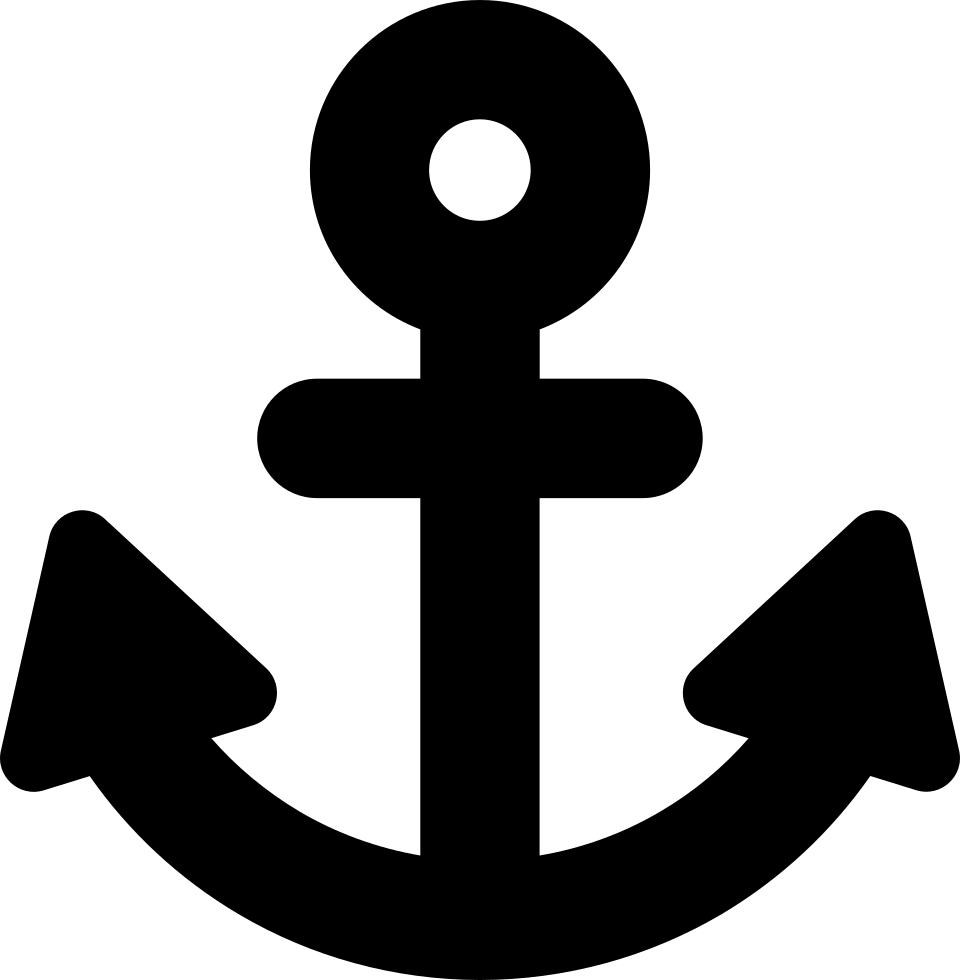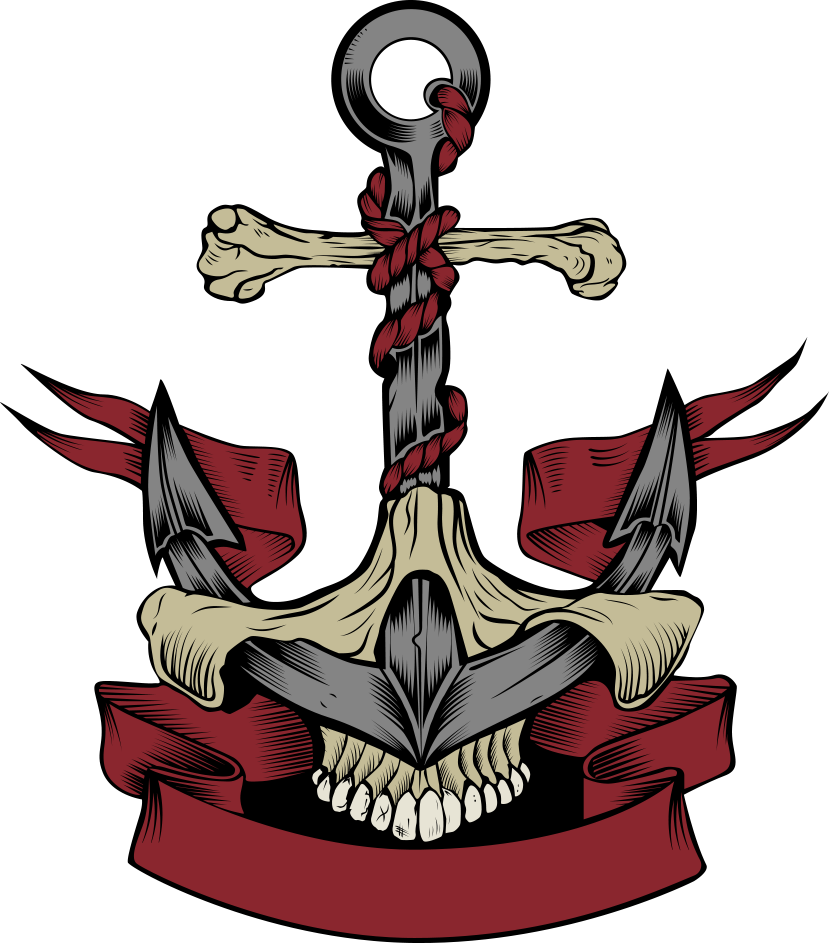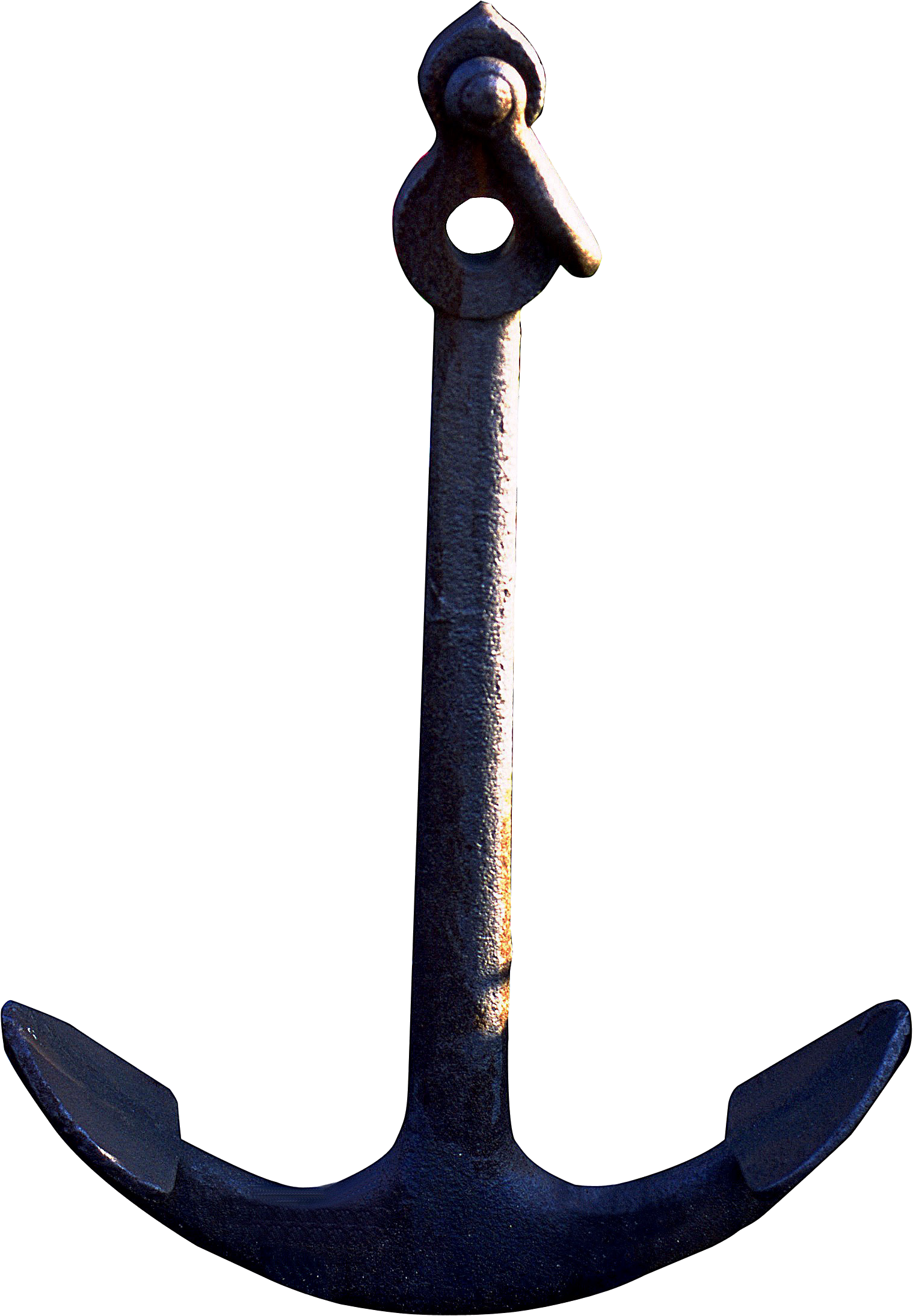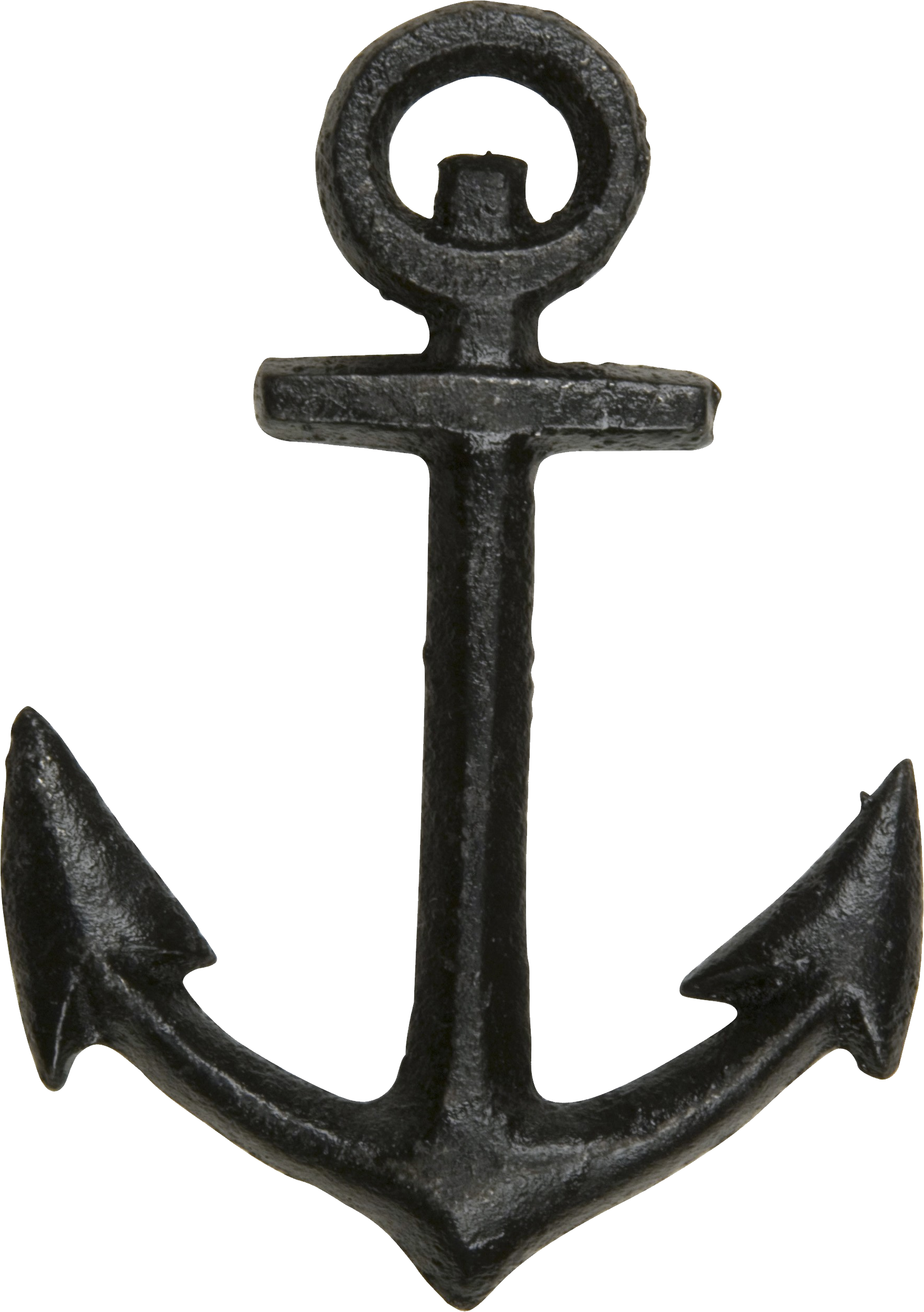Download top and best high-quality free Anchor PNG Transparent Images backgrounds available in various sizes. To view the full PNG size resolution click on any of the below image thumbnail.
License Info: Creative Commons 4.0 BY-NC
An anchor is a metal device used to hold a vessel to the bottom of a body of water in order to prevent it from floating owing to wind or current. The term originates from the Latin ancora, which is derived from the Greek (ankra).
Temporary or permanent anchors are available. Permanent anchors are used to create moorings and are seldom changed; moving or maintaining them usually necessitates the assistance of a professional service. Vessels are equipped with one or more temporary anchors of various designs and weights.
A sea anchor is a drag device that is not in touch with the bottom and is used to reduce a vessel’s drift in relation to the water. A drogue is a drag device that is used to slow or guide a vessel approaching a storm in a following or overtaking sea, or crossing a bar in a breaking sea.’
Anchors get their holding strength by “hooking” onto the bottom, by mass, or by a combination of both. Permanent moorings are made up of huge masses (usually a concrete block or slab) that lie on the seafloor. Large ship’s anchors and semi-permanent mooring anchors (such as mushroom anchors) receive a major amount of their holding strength from their bulk, which hooks or embeds in the bottom. Metal flukes on modern anchors for smaller vessels catch on to rocks on the bottom or bury themselves in the seafloor.
The rode connects the vessel to the anchor (also called a cable or a warp) Rope, chain, or a mix of rope and chain can be used. The scope is defined as the ratio of rode length to water depth (see below).
The area of the seafloor where an anchor is held, as well as the associated ship or boat, is known as holding ground. Different anchors are intended to hold in various types of holding ground. Some bottom materials, such as firm sand, hold up better than others; for example, shell holds up badly. Obstacles can make holding ground difficult. For its holding ground, an anchorage location might be chosen. Only the weight of an anchor counts in bad holding ground; in excellent holding ground, it can dig in and the holding power can be much higher.
The first anchors were most likely rocks, and several rock anchors going back to the Bronze Age have been discovered. Anchors for pre-European Maori waka (canoes) were hollowed stones connected with flax ropes. Many contemporary moorings still use a big boulder as the major structural feature. However, utilising pure mass to withstand storm forces only works as a permanent mooring; moving a huge enough boulder to a different place would be almost impossible.
The ancient Greeks utilized stone baskets, huge sacks loaded with sand, and wooden logs filled with lead. Anchors were constructed of stone, according to Apollonius Rhodius and Stephen of Byzantium, and they were also made of wood, according to Athenaeus. The vessel was only held afloat by the weight of the anchors and friction along the bottom.
Download Anchor PNG images transparent gallery.
- Anchor PNG Images HD
Resolution: 1016 × 1360
Size: 537 KB
Image Format: .png
Download
- Anchor Vector PNG Images HD
Resolution: 1875 × 1875
Size: 21 KB
Image Format: .png
Download
- Anchor PNG Free Image
Resolution: 1090 × 1280
Size: 759 KB
Image Format: .png
Download
- Anchor PNG Image File
Resolution: 1933 × 2400
Size: 87 KB
Image Format: .png
Download
- Anchor Vector PNG Free Image
Resolution: 1024 × 1024
Size: 31 KB
Image Format: .png
Download
- Anchor Silhouette PNG Images
Resolution: 4826 × 6660
Size: 172 KB
Image Format: .png
Download
- Anchor Silhouette PNG Photos
Resolution: 1027 × 1209
Size: 18 KB
Image Format: .png
Download
- Anchor Silhouette Transparent
Resolution: 2000 × 2422
Size: 63 KB
Image Format: .png
Download
- Anchor
Resolution: 6130 × 7895
Size: 1223 KB
Image Format: .png
Download
- Anchor PNG Cutout
Resolution: 896 × 992
Size: 869 KB
Image Format: .png
Download
- Anchor Vector PNG Photos
Resolution: 832 × 1304
Size: 1216 KB
Image Format: .png
Download
- Anchor Vector PNG Picture
Resolution: 700 × 700
Size: 275 KB
Image Format: .png
Download
- Anchor Vector No Background
Resolution: 1152 × 1280
Size: 1096 KB
Image Format: .png
Download
- Anchor Background PNG
Resolution: 937 × 1103
Size: 642 KB
Image Format: .png
Download
- Anchor Vector PNG Image File
Resolution: 644 × 907
Size: 441 KB
Image Format: .png
Download
- Anchor Vector Background PNG
Resolution: 644 × 750
Size: 68 KB
Image Format: .png
Download
- Anchor Vector PNG Background
Resolution: 1024 × 1280
Size: 249 KB
Image Format: .png
Download
- Anchor Silhouette
Resolution: 689 × 689
Size: 46 KB
Image Format: .png
Download
- Anchor PNG
Resolution: 932 × 508
Size: 233 KB
Image Format: .png
Download
- Anchor PNG Pic
Resolution: 3479 × 4501
Size: 2039 KB
Image Format: .png
Download
- Anchor PNG File
Resolution: 832 × 1304
Size: 1170 KB
Image Format: .png
Download
- Anchor Silhouette PNG
Resolution: 1000 × 1000
Size: 37 KB
Image Format: .png
Download
- Anchor PNG Image
Resolution: 738 × 709
Size: 248 KB
Image Format: .png
Download
- Anchor PNG Photo
Resolution: 2080 × 2690
Size: 189 KB
Image Format: .png
Download
- Anchor Vector
Resolution: 2001 × 2887
Size: 223 KB
Image Format: .png
Download
- Anchor Vector PNG
Resolution: 776 × 1069
Size: 820 KB
Image Format: .png
Download
- Anchor Vector PNG Pic
Resolution: 817 × 732
Size: 406 KB
Image Format: .png
Download
- Anchor Vector PNG File
Resolution: 934 × 534
Size: 69 KB
Image Format: .png
Download
- Anchor Vector PNG Image
Resolution: 2001 × 2788
Size: 168 KB
Image Format: .png
Download
- Anchor Vector PNG Photo
Resolution: 934 × 534
Size: 130 KB
Image Format: .png
Download
- Anchor Silhouette PNG Pic
Resolution: 870 × 980
Size: 40 KB
Image Format: .png
Download
- Anchor Vector PNG Cutout
Resolution: 990 × 743
Size: 226 KB
Image Format: .png
Download
- Anchor Silhouette PNG File
Resolution: 1848 × 1848
Size: 48 KB
Image Format: .png
Download
- Anchor Vector PNG Images
Resolution: 990 × 990
Size: 159 KB
Image Format: .png
Download
- Anchor PNG Images
Resolution: 1712 × 2400
Size: 129 KB
Image Format: .png
Download
- Anchor PNG Photos
Resolution: 917 × 1387
Size: 69 KB
Image Format: .png
Download
- Anchor Vector Transparent
Resolution: 2231 × 3500
Size: 1350 KB
Image Format: .png
Download
- Anchor Vector PNG Clipart
Resolution: 849 × 897
Size: 261 KB
Image Format: .png
Download
- Anchor Transparent
Resolution: 1474 × 2445
Size: 178 KB
Image Format: .png
Download
- Anchor PNG Clipart
Resolution: 1278 × 979
Size: 122 KB
Image Format: .png
Download
- Anchor PNG Picture
Resolution: 1001 × 1237
Size: 98 KB
Image Format: .png
Download
- Anchor Silhouette PNG Image
Resolution: 1286 × 1464
Size: 42 KB
Image Format: .png
Download
- Anchor Silhouette PNG Photo
Resolution: 900 × 980
Size: 24 KB
Image Format: .png
Download
- Anchor PNG HD Image
Resolution: 906 × 974
Size: 192 KB
Image Format: .png
Download
- Anchor Silhouette PNG Cutout
Resolution: 960 × 980
Size: 24 KB
Image Format: .png
Download
- Anchor PNG Image HD
Resolution: 829 × 943
Size: 261 KB
Image Format: .png
Download
- Anchor Vector PNG HD Image
Resolution: 1518 × 2188
Size: 1537 KB
Image Format: .png
Download
- Anchor Vector PNG Image HD
Resolution: 858 × 858
Size: 20 KB
Image Format: .png
Download
- Anchor No Background
Resolution: 1760 × 2499
Size: 1558 KB
Image Format: .png
Download
